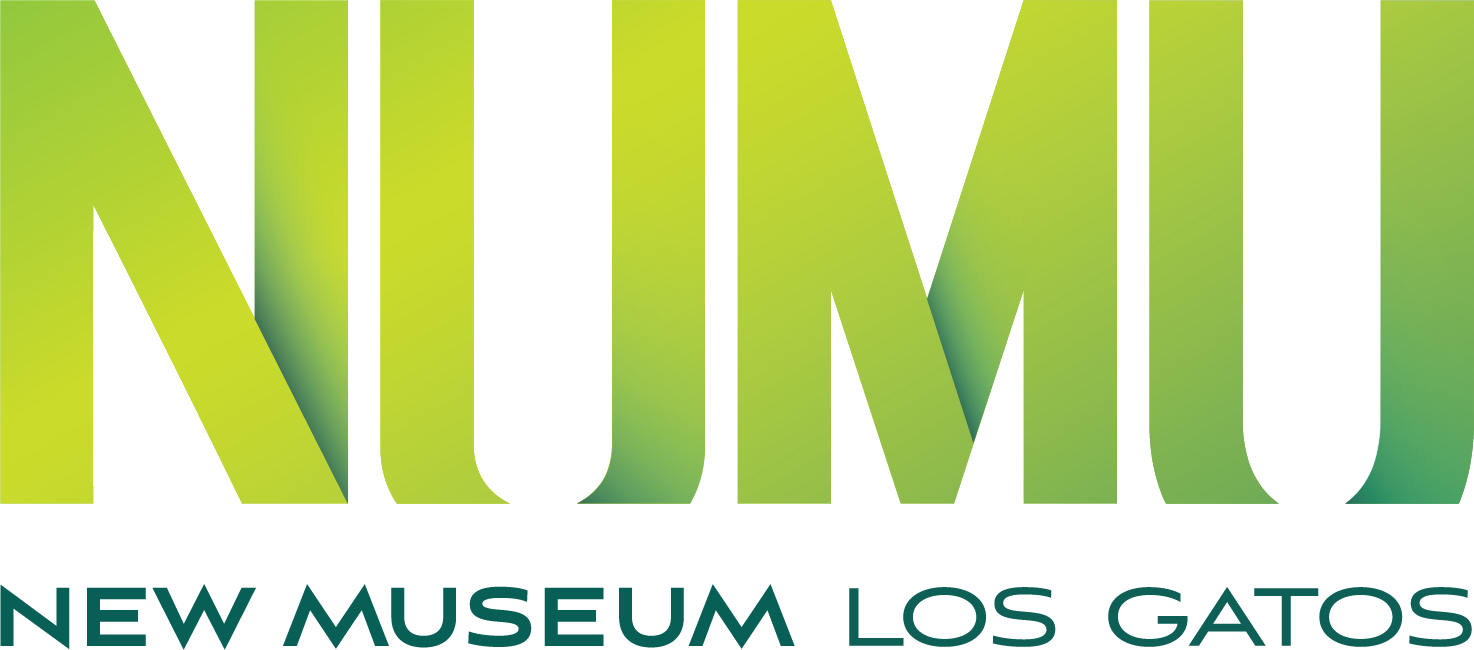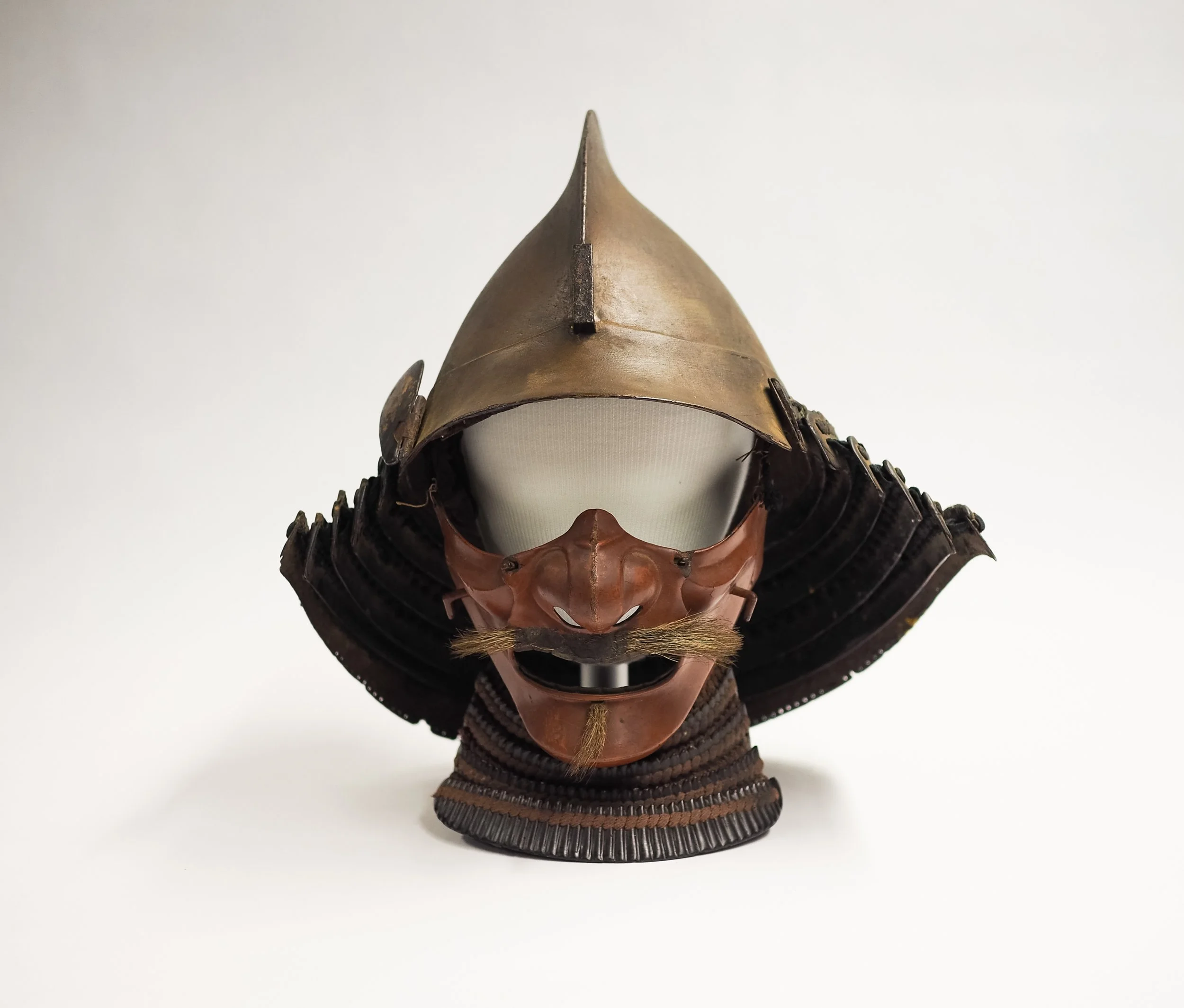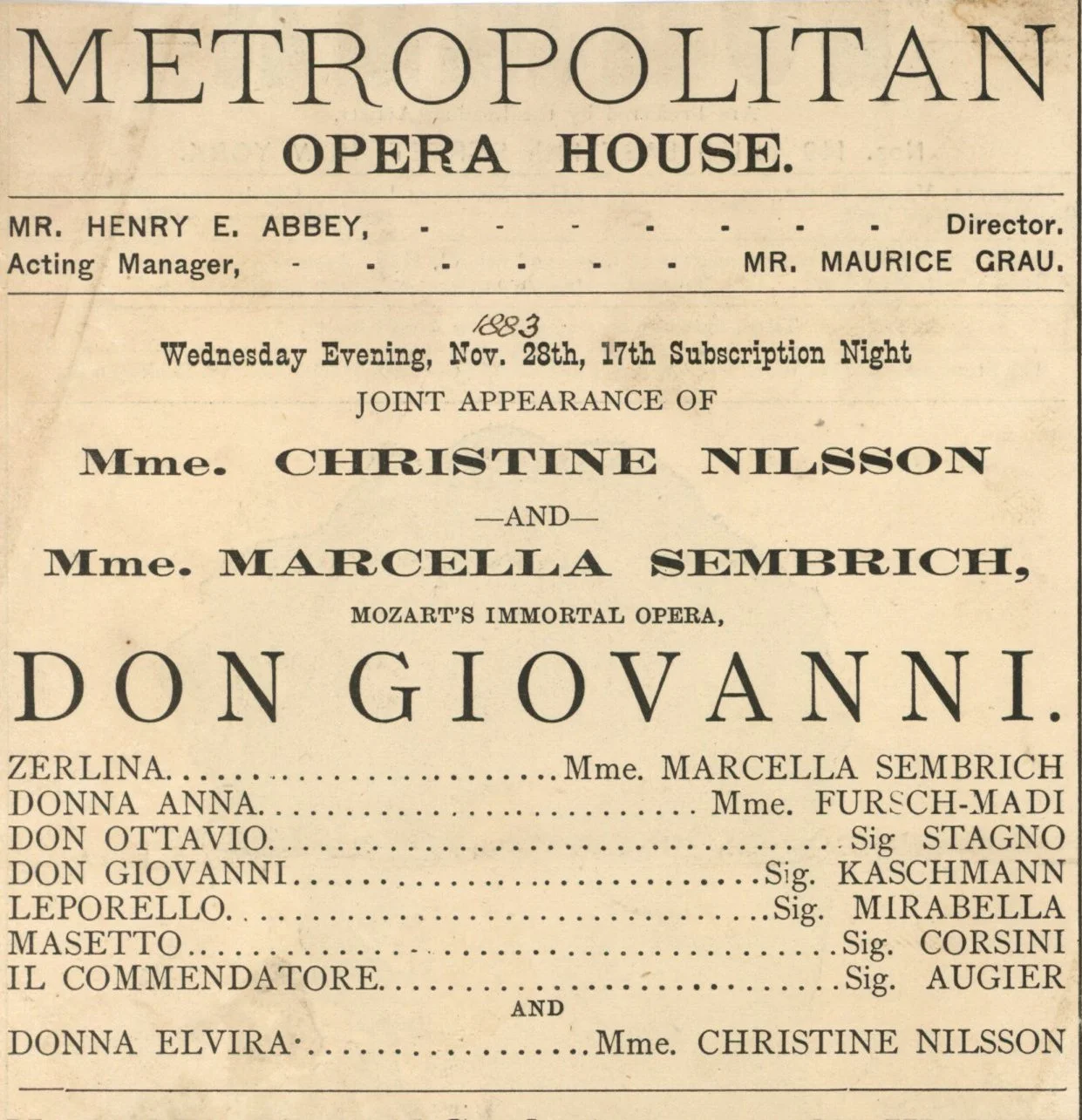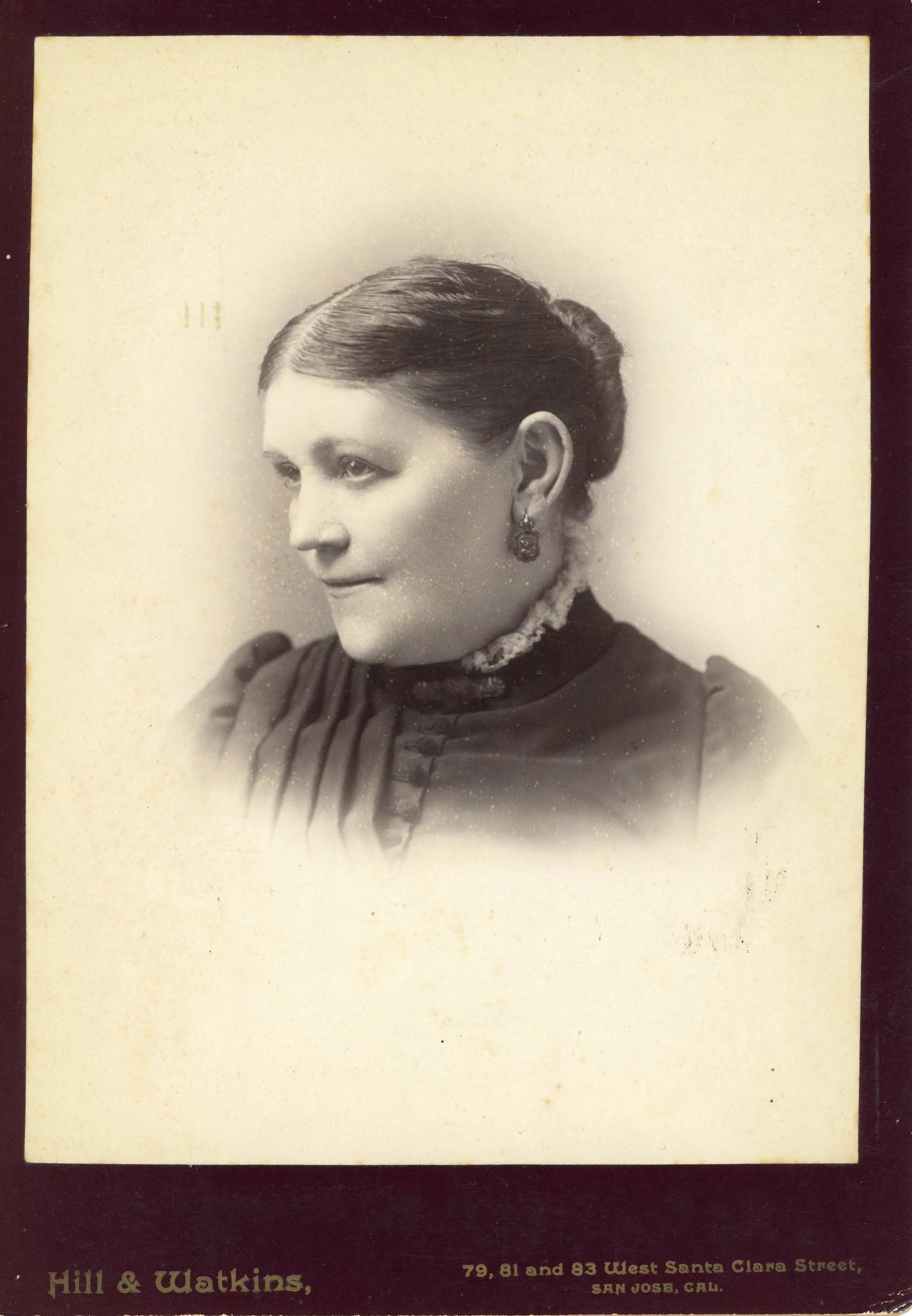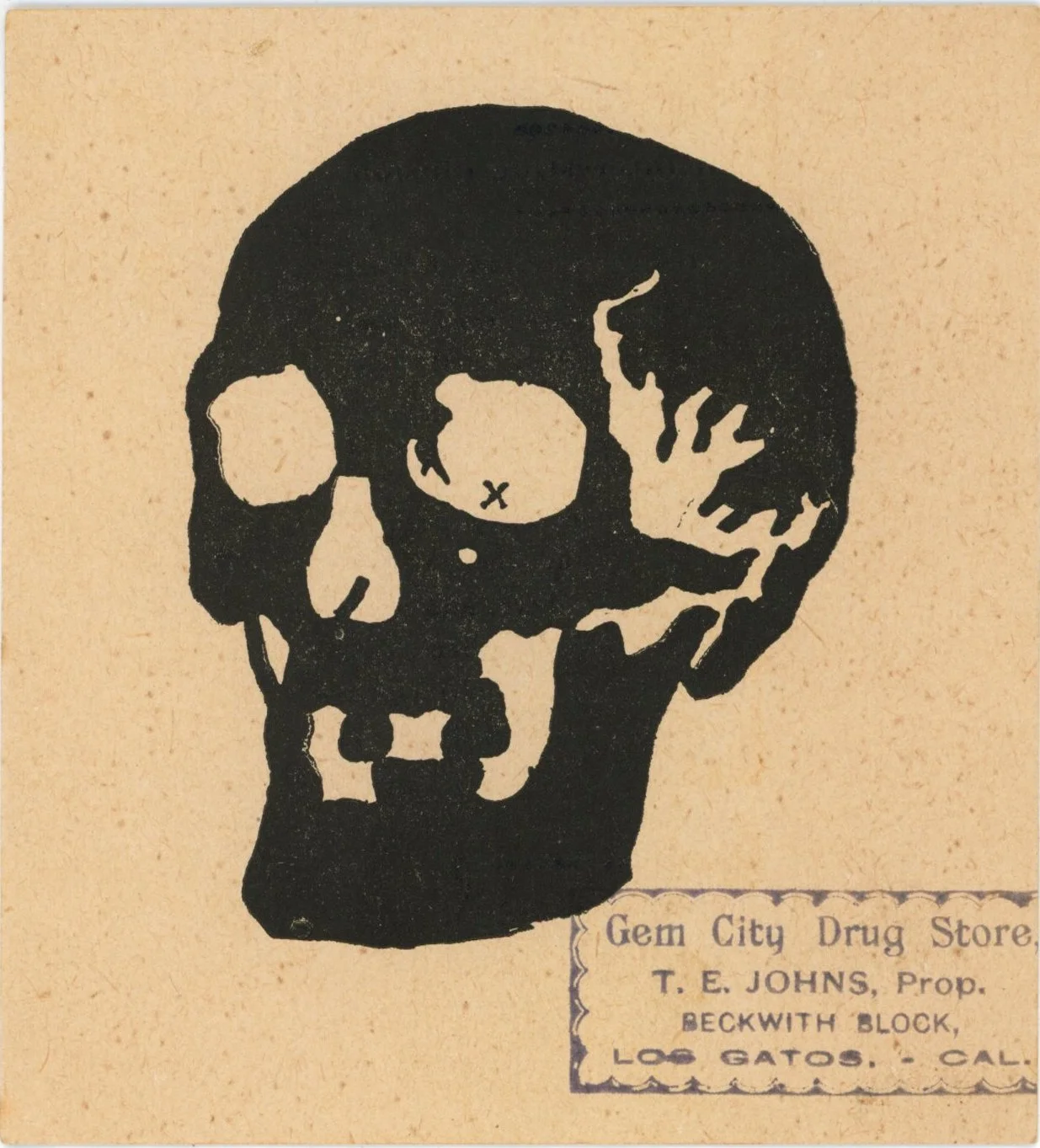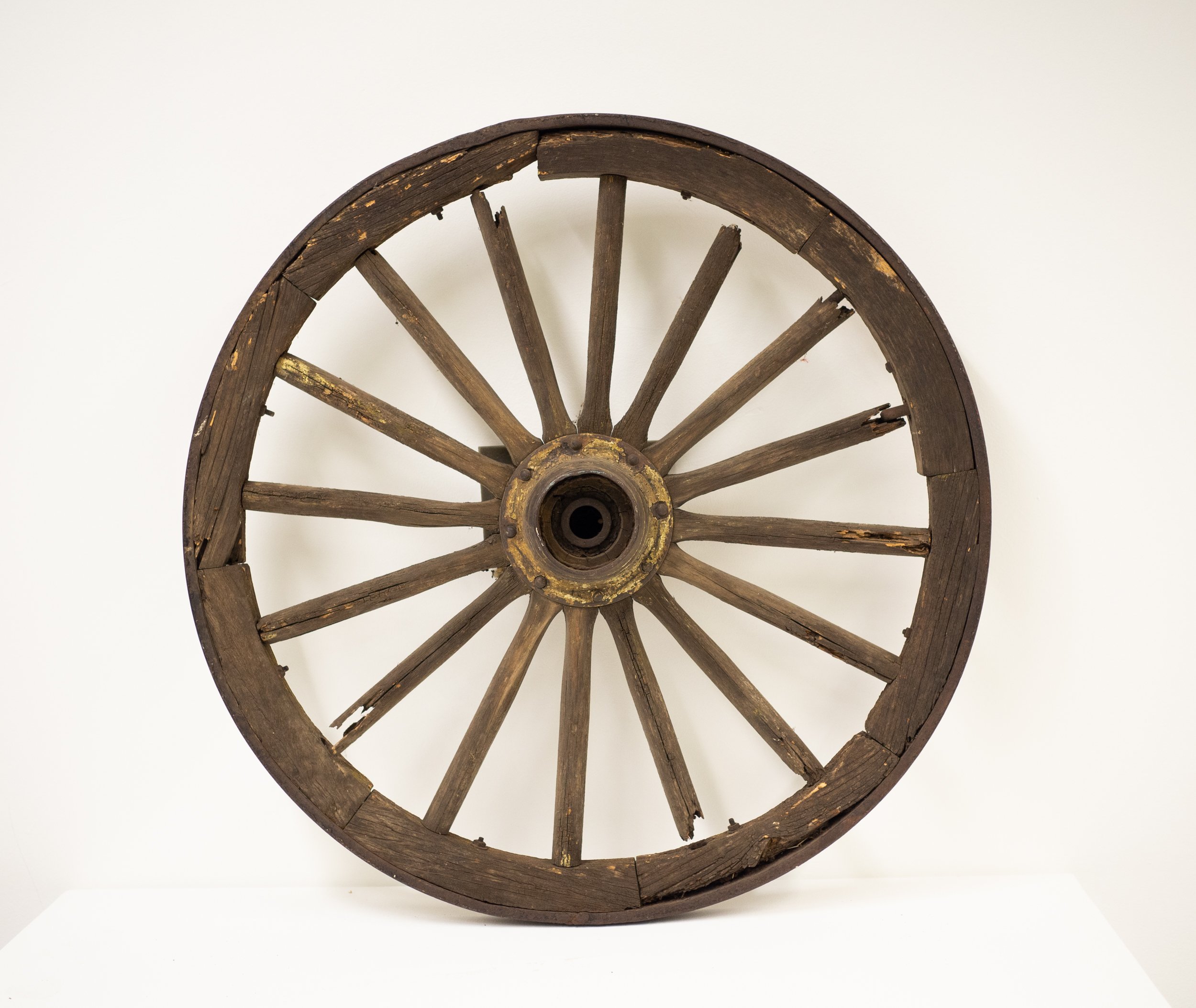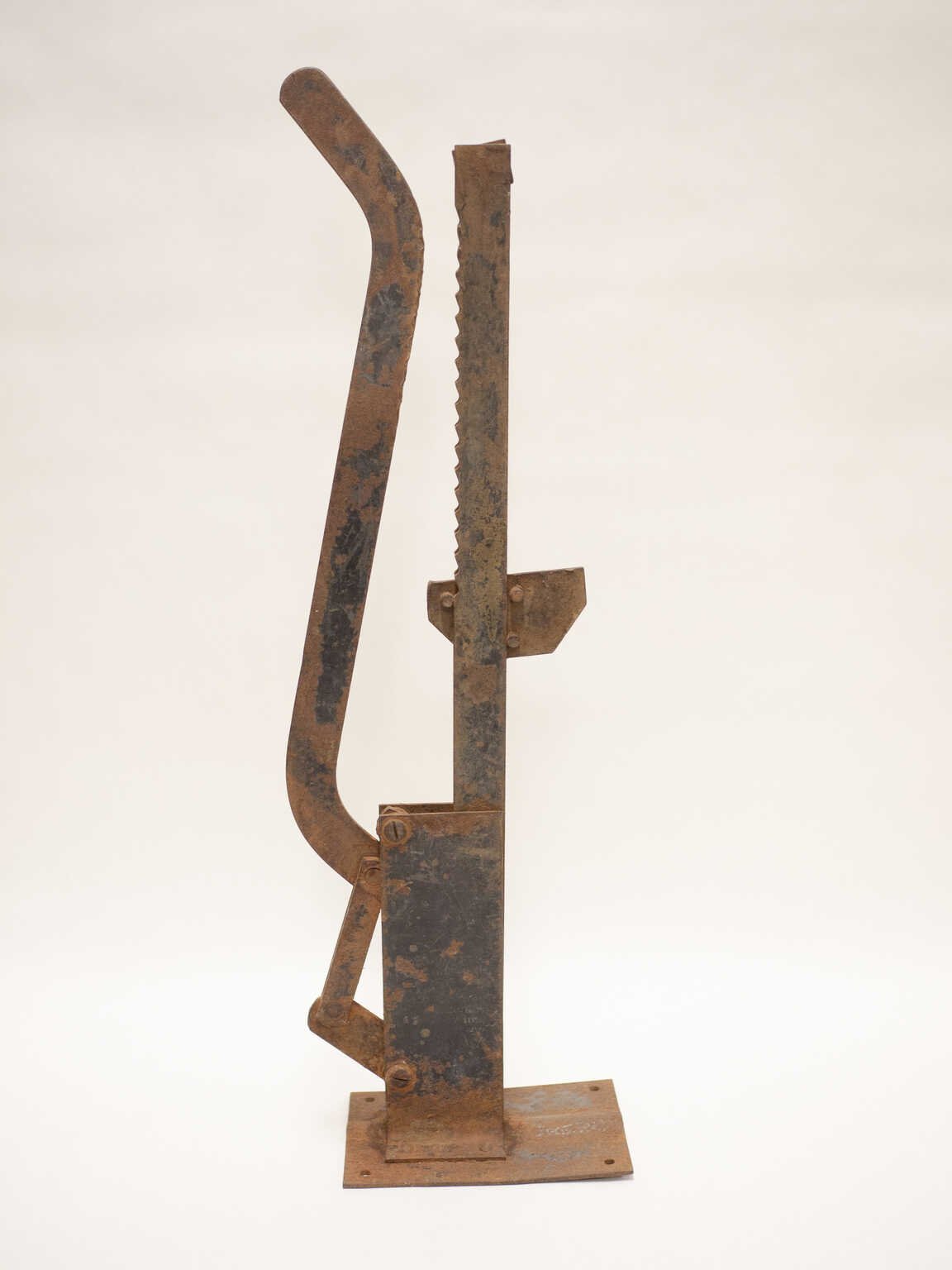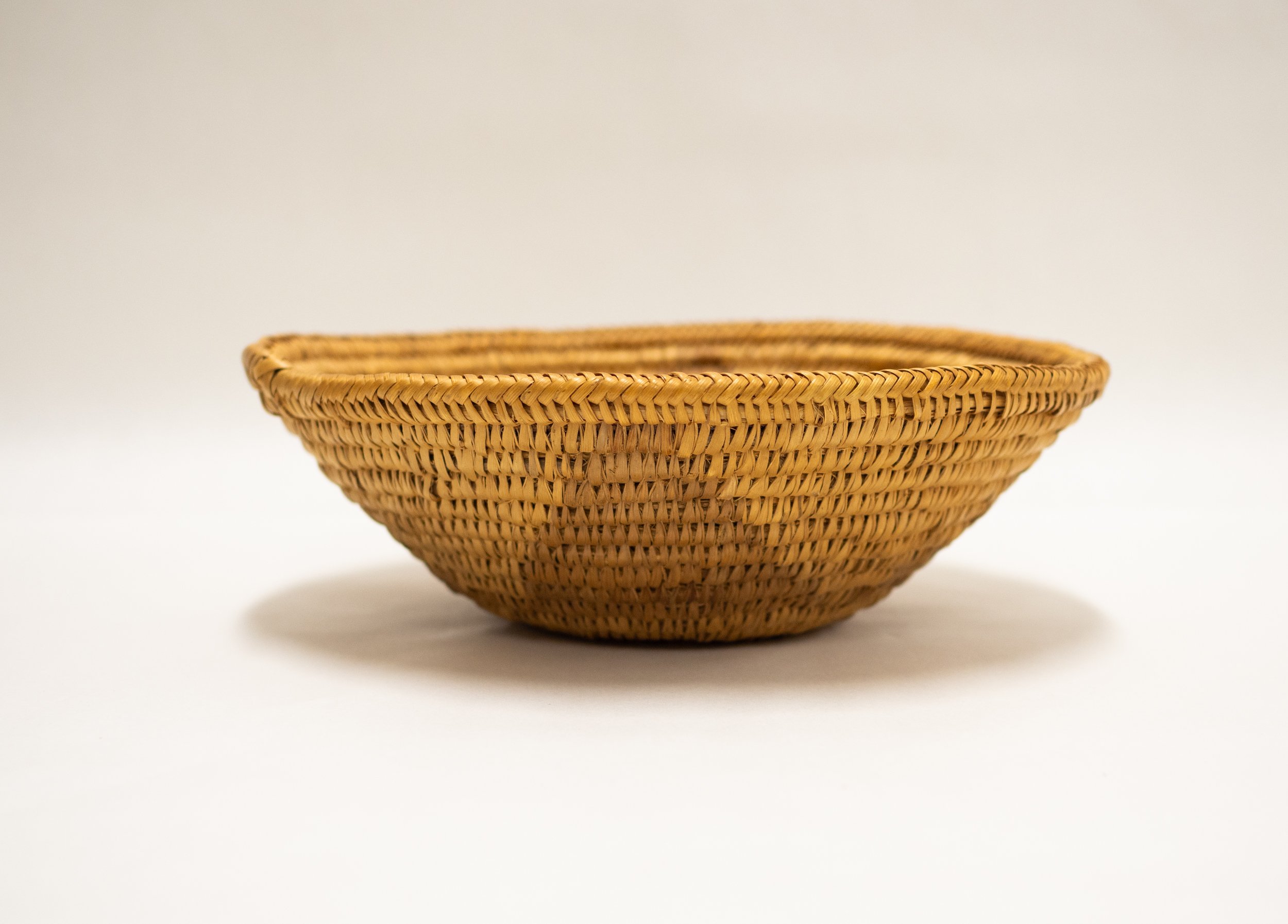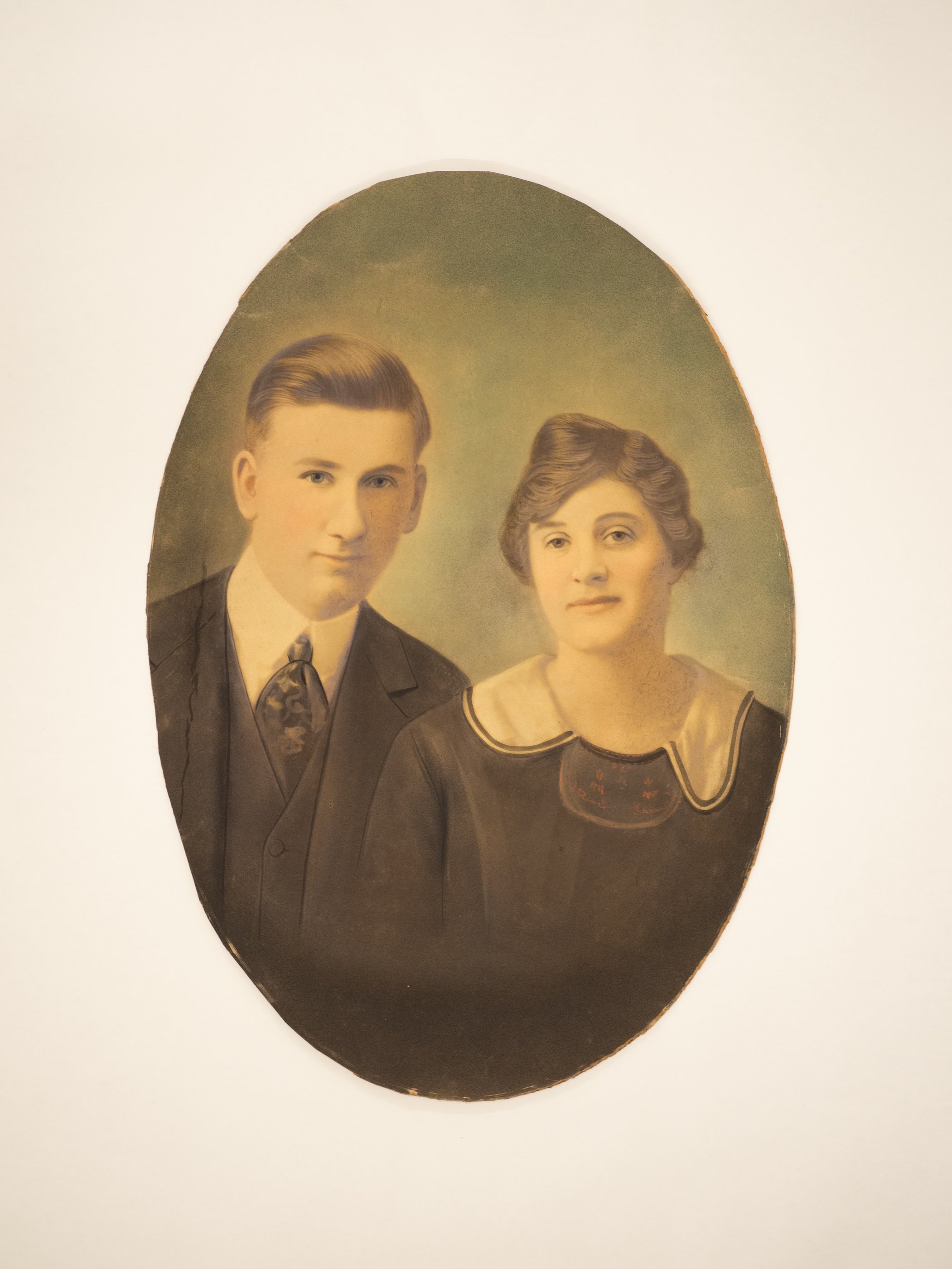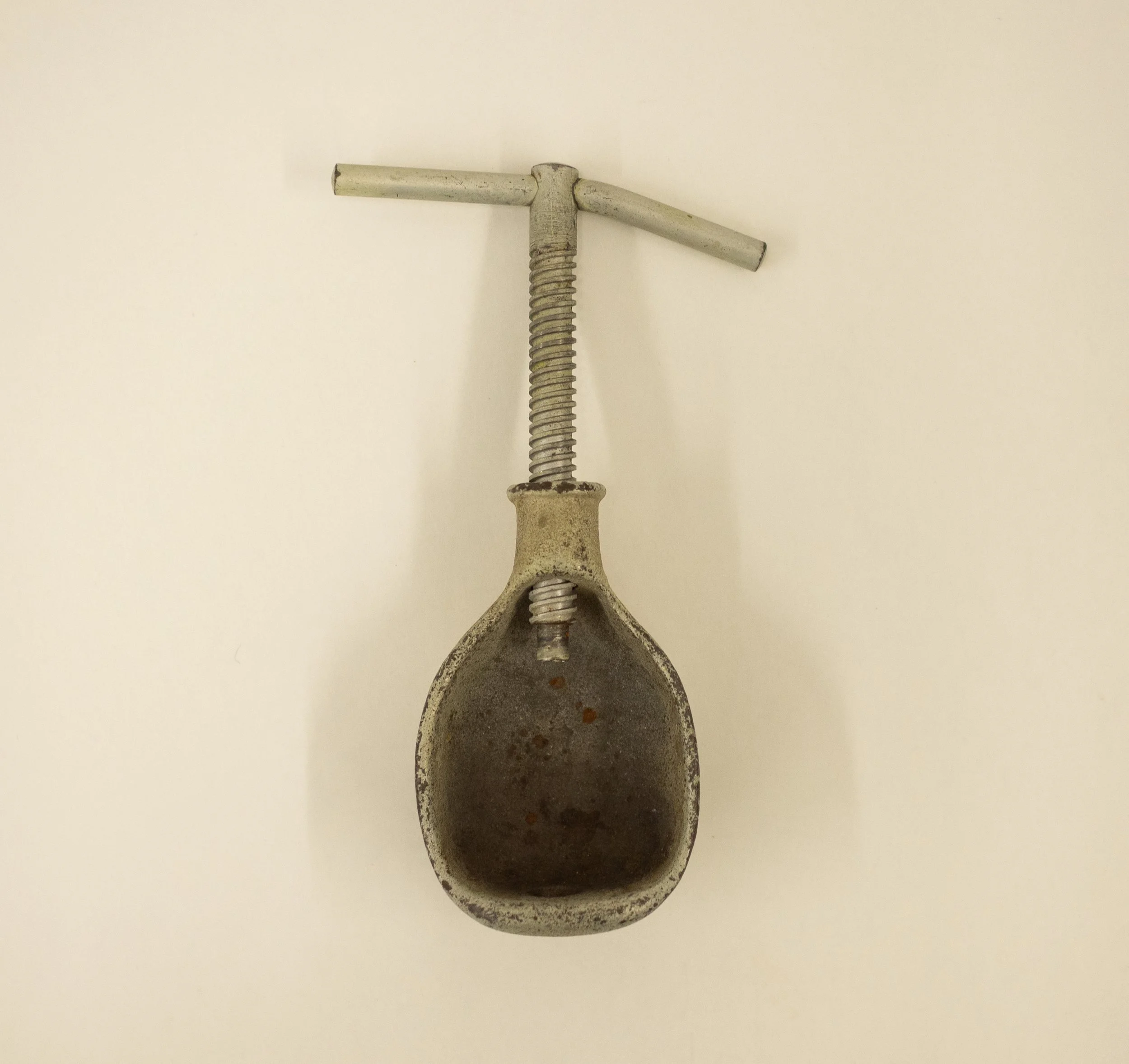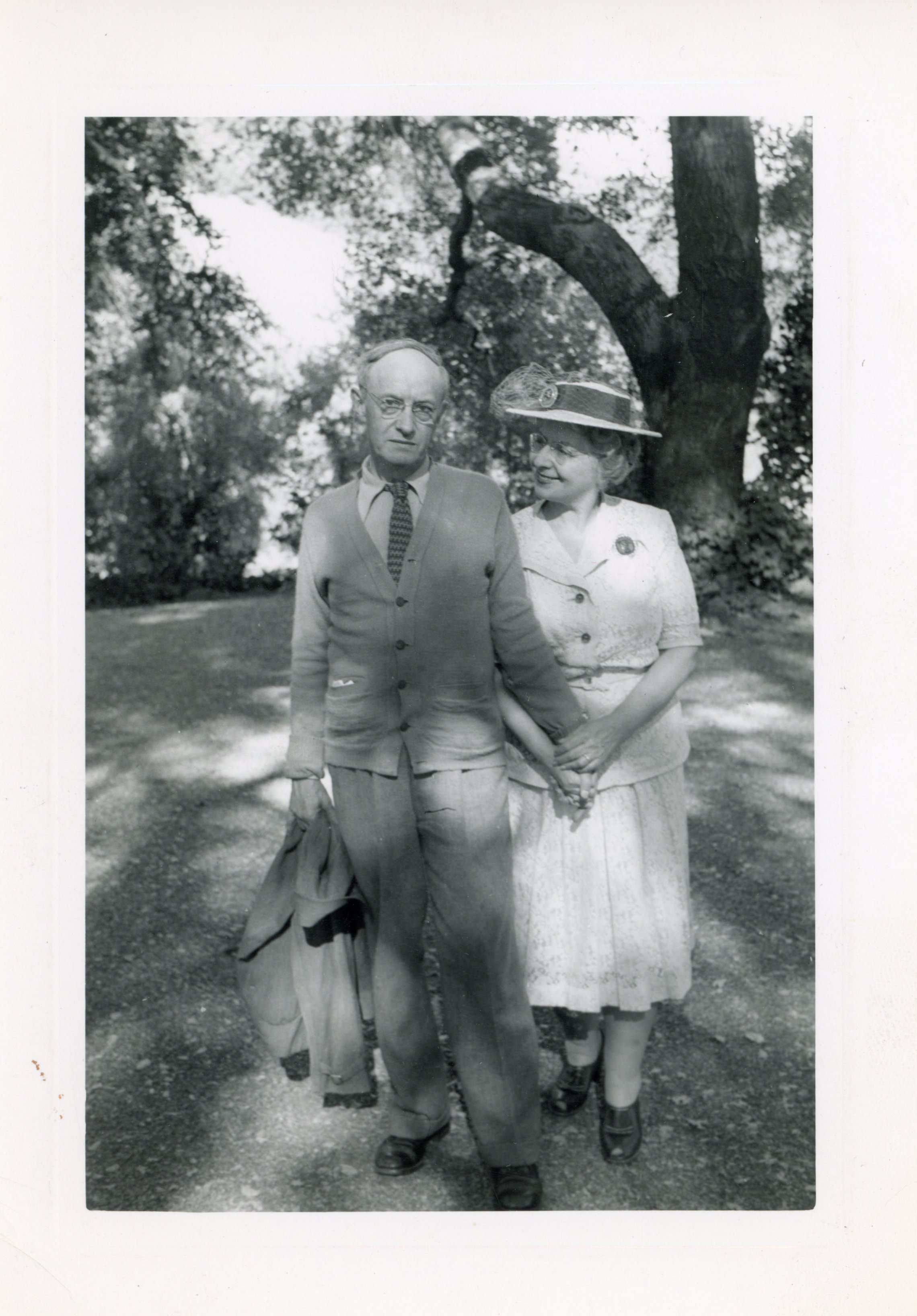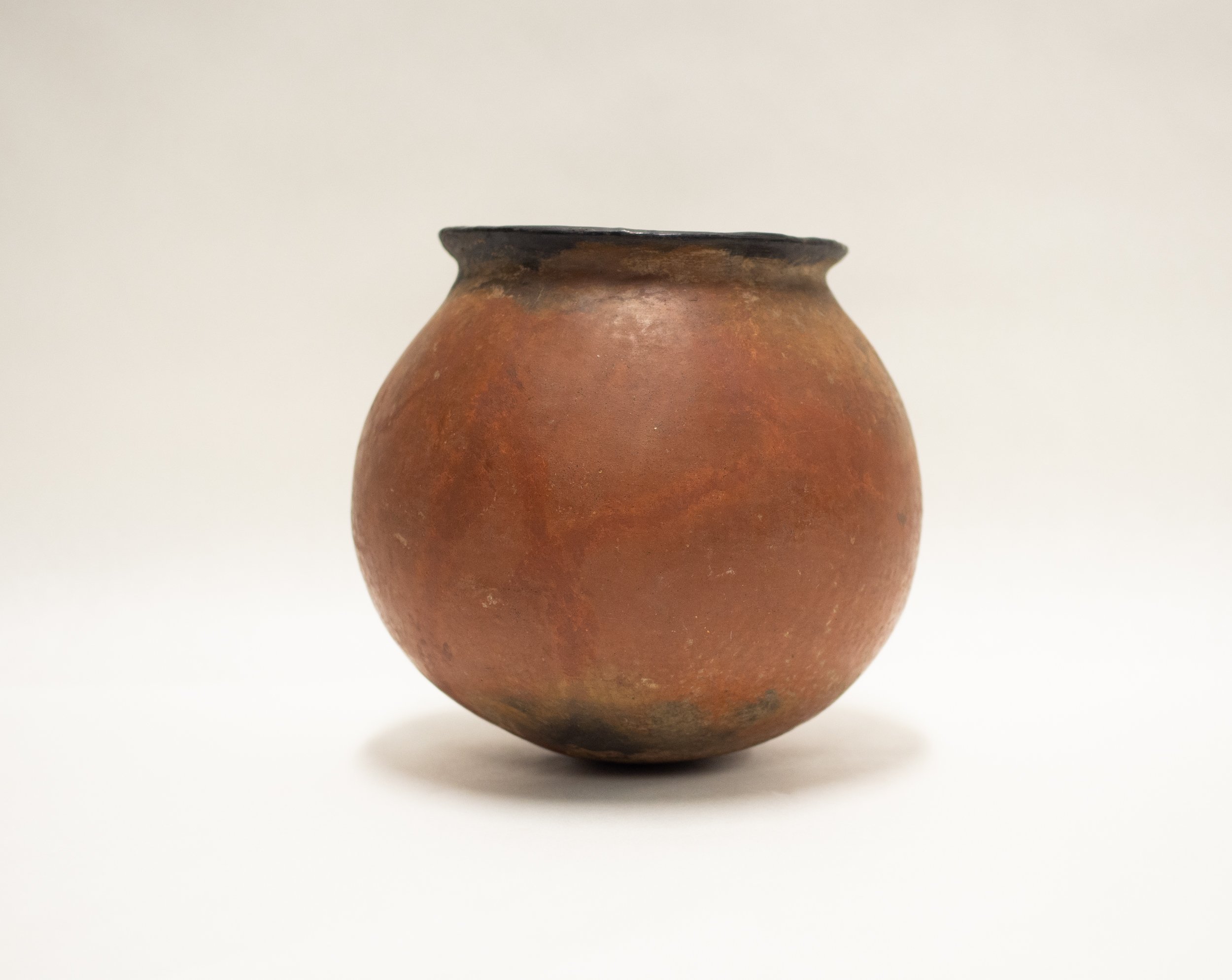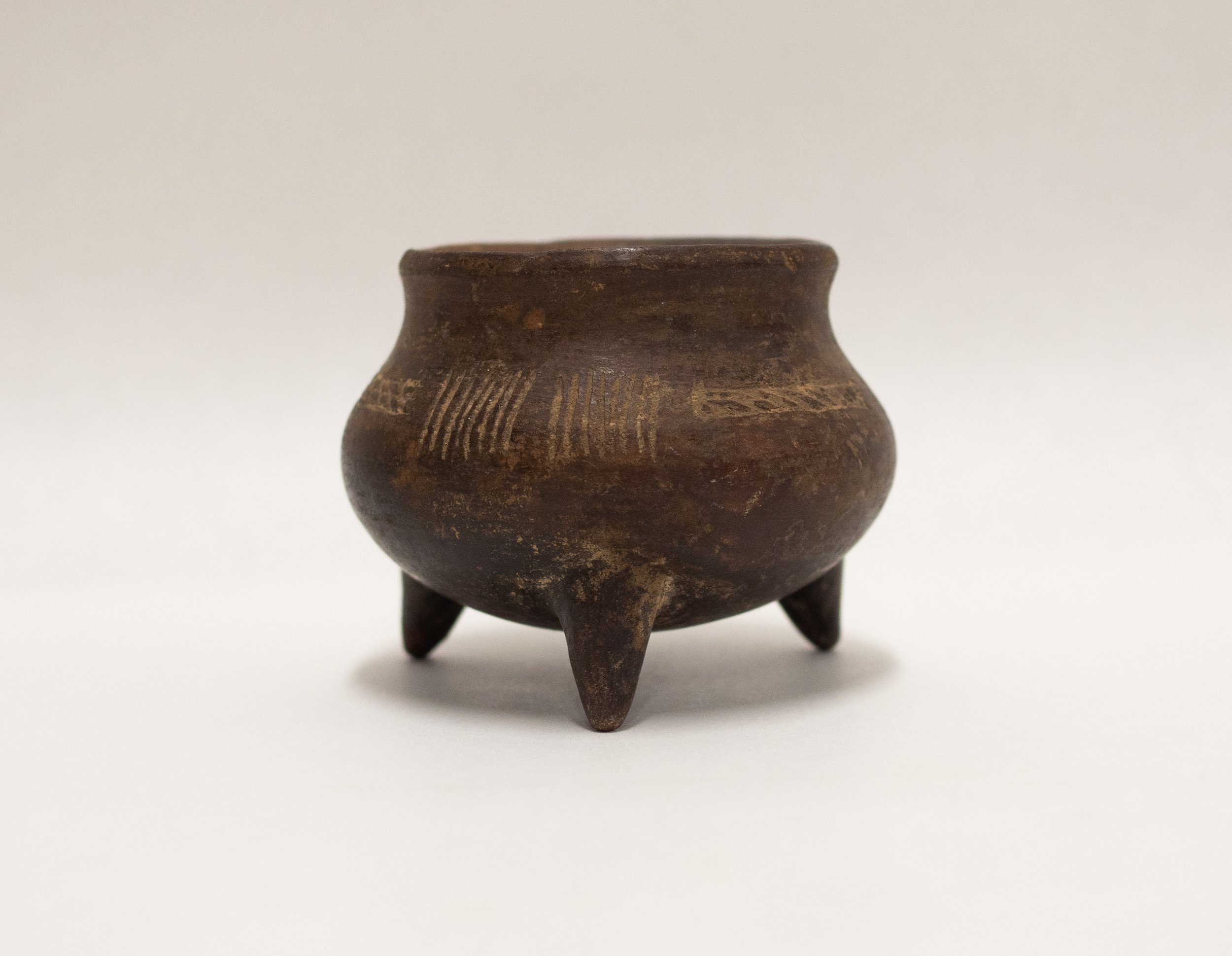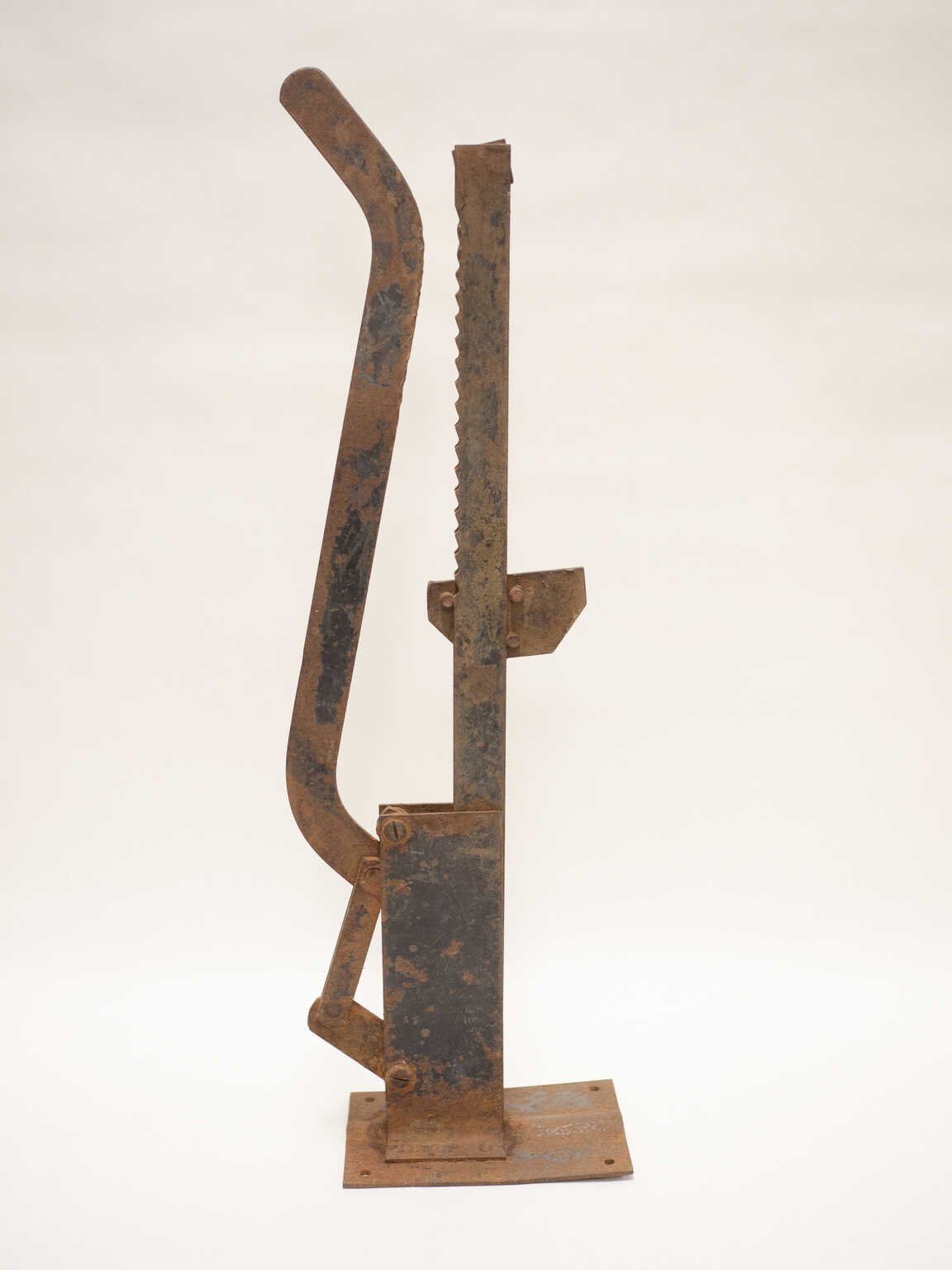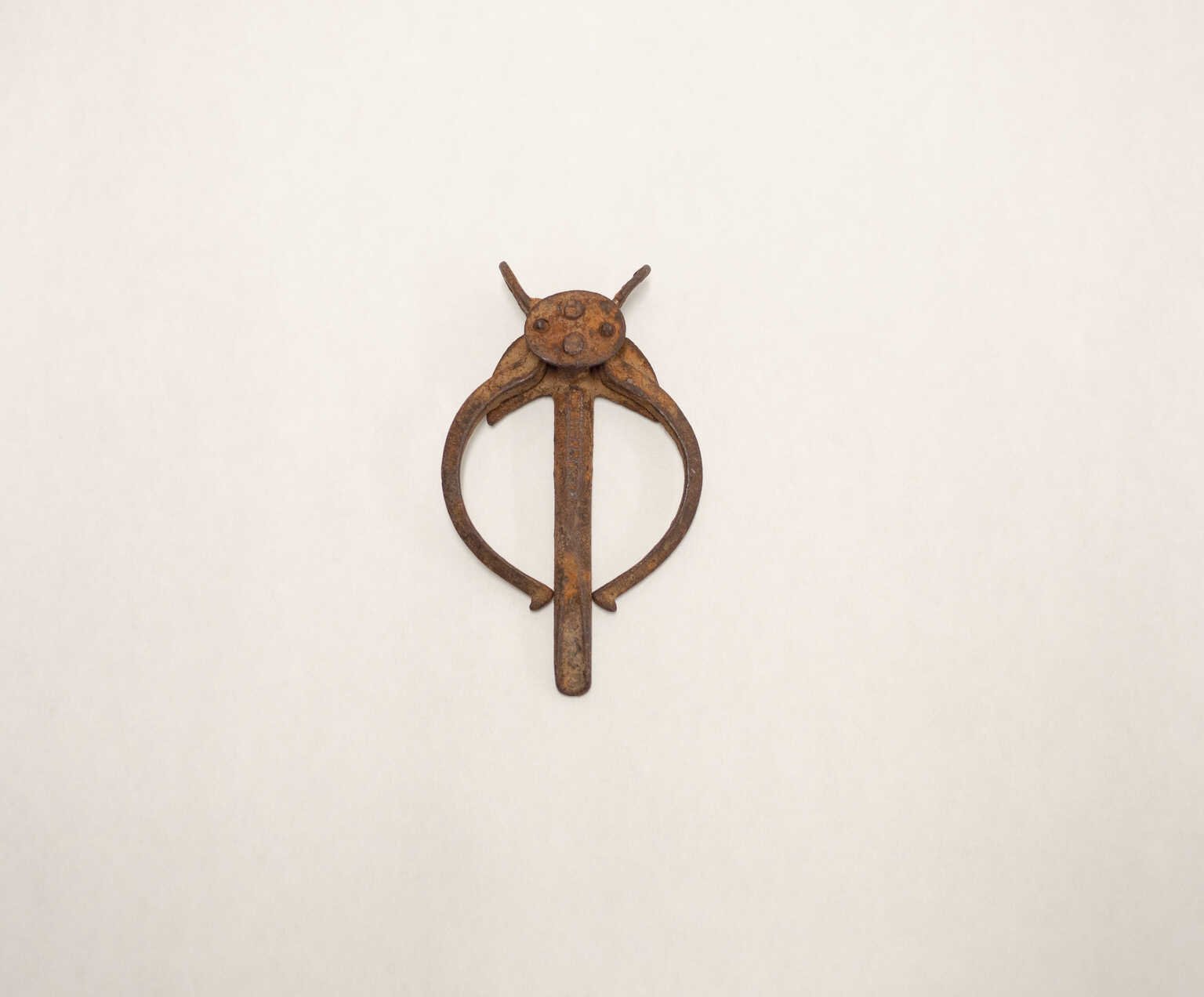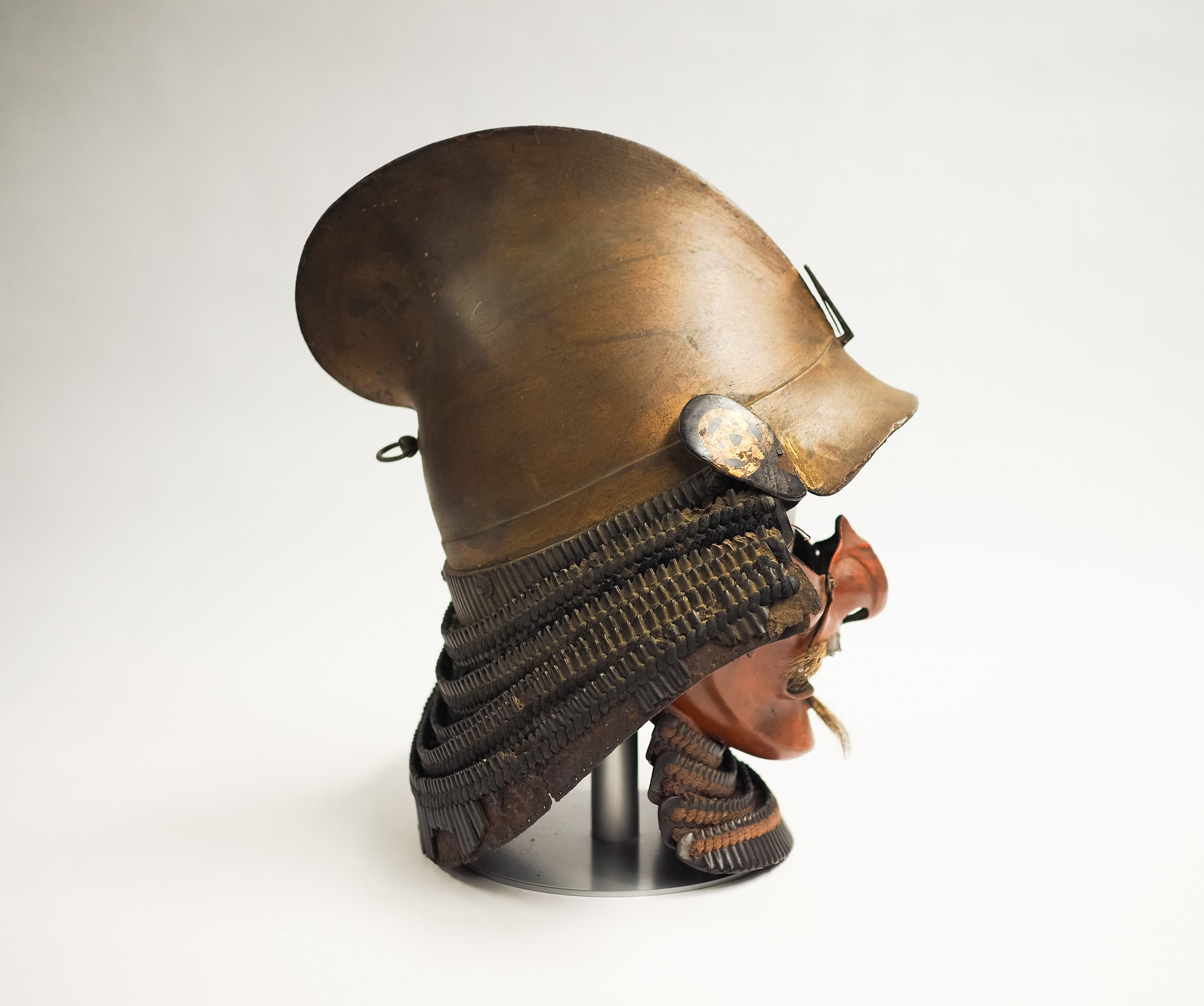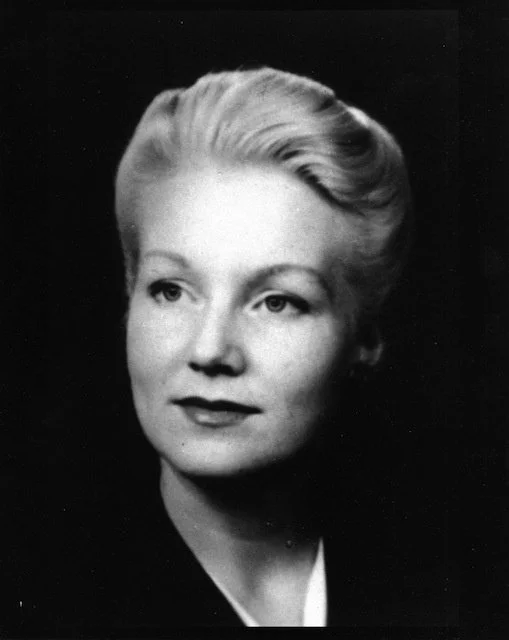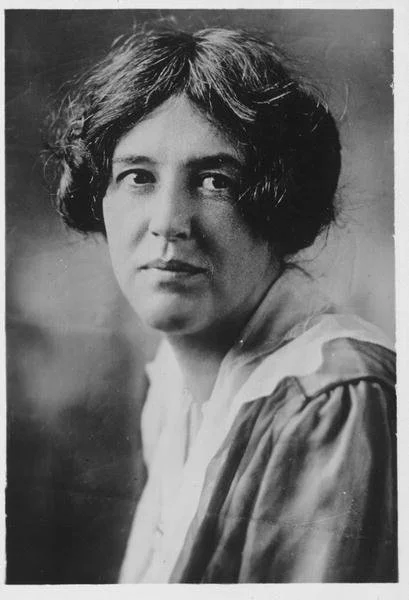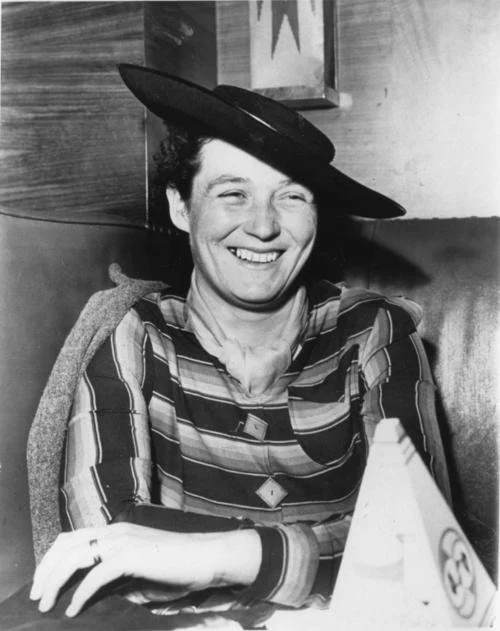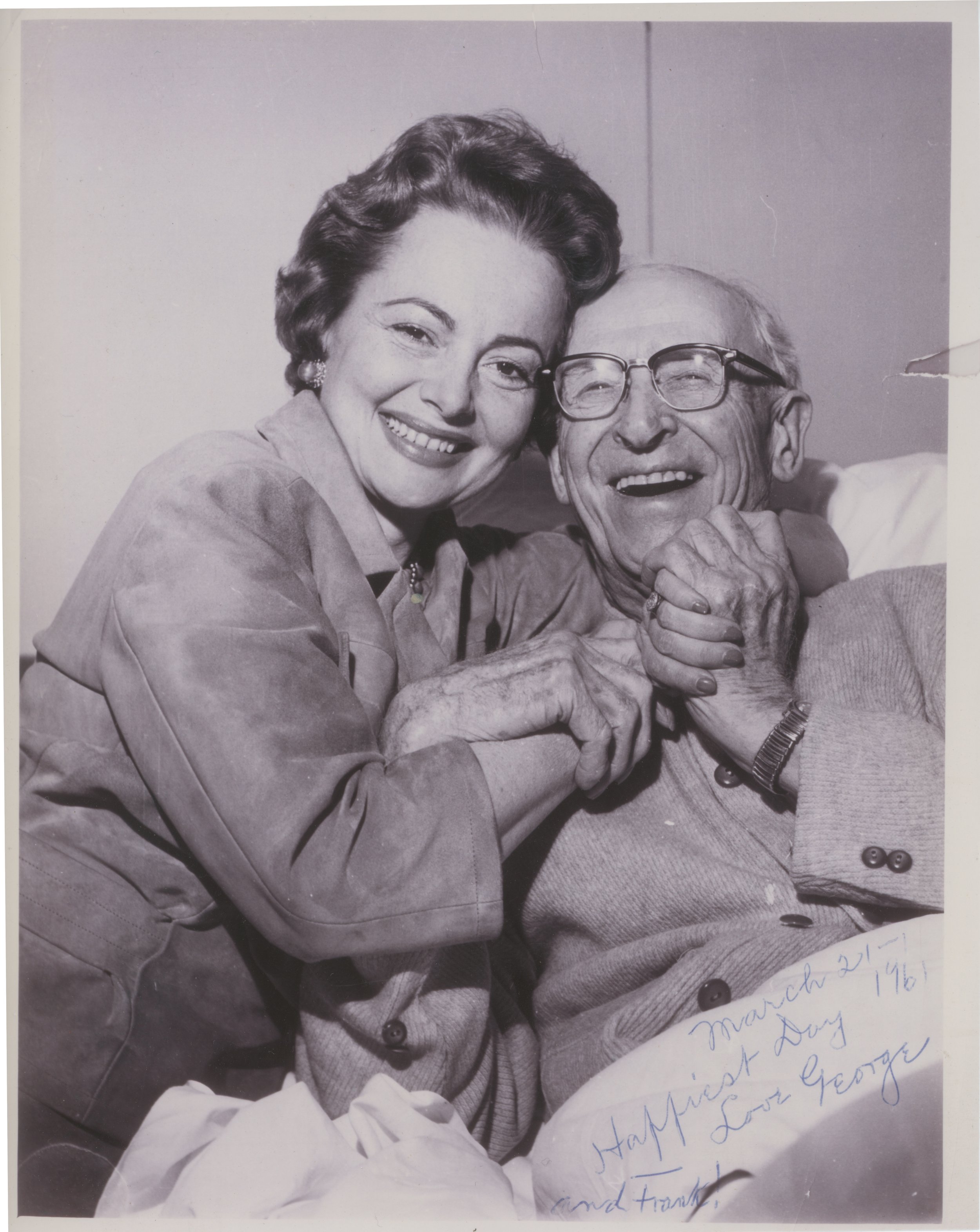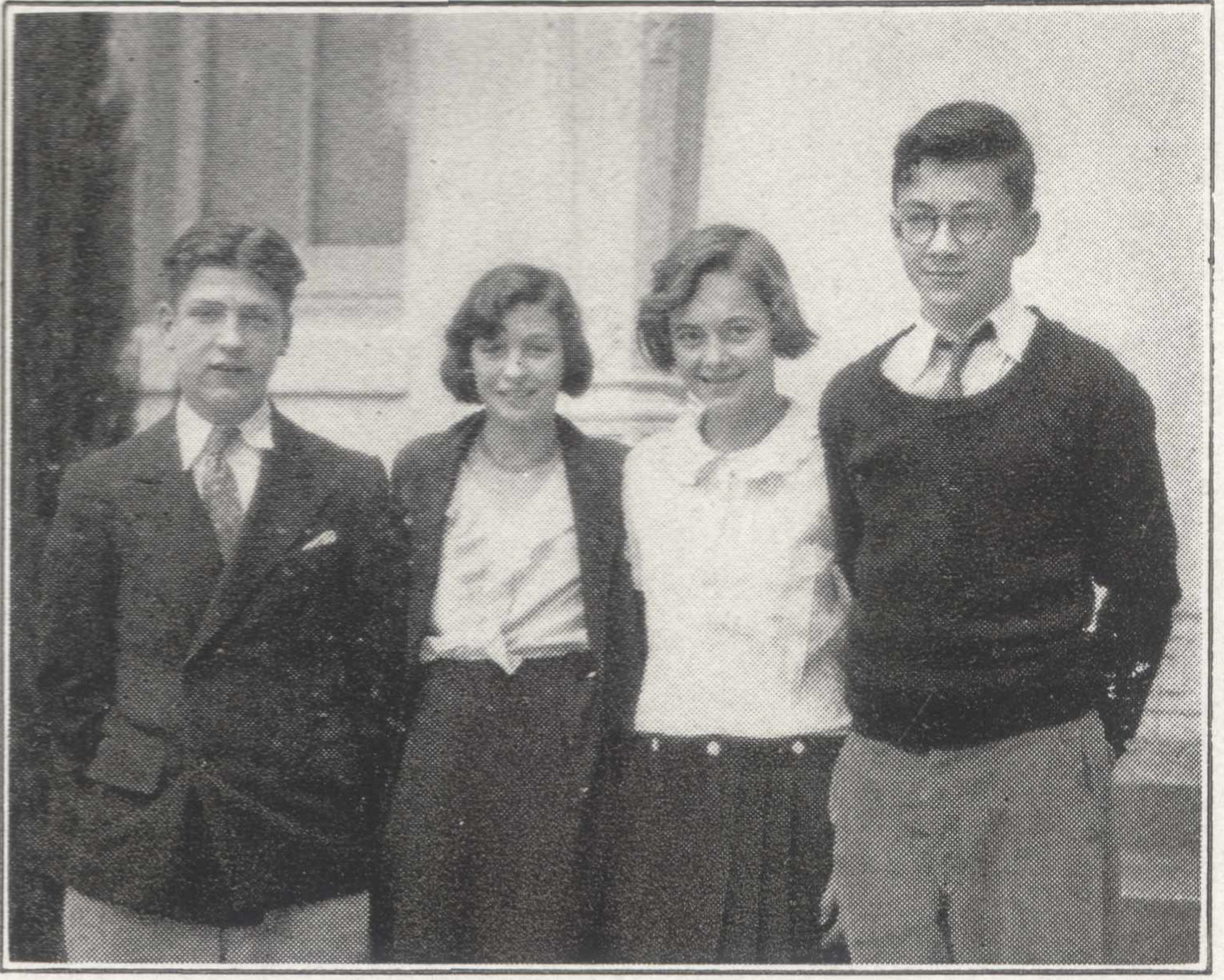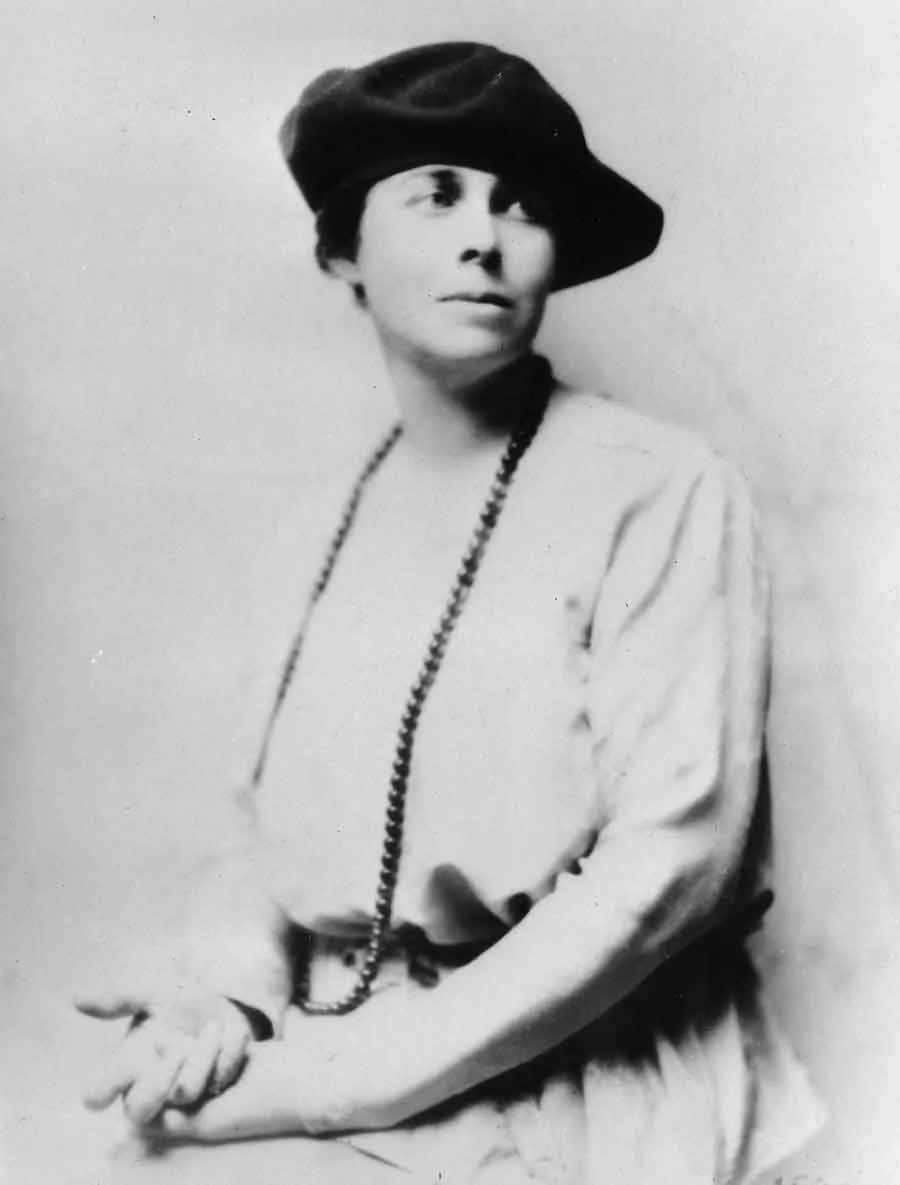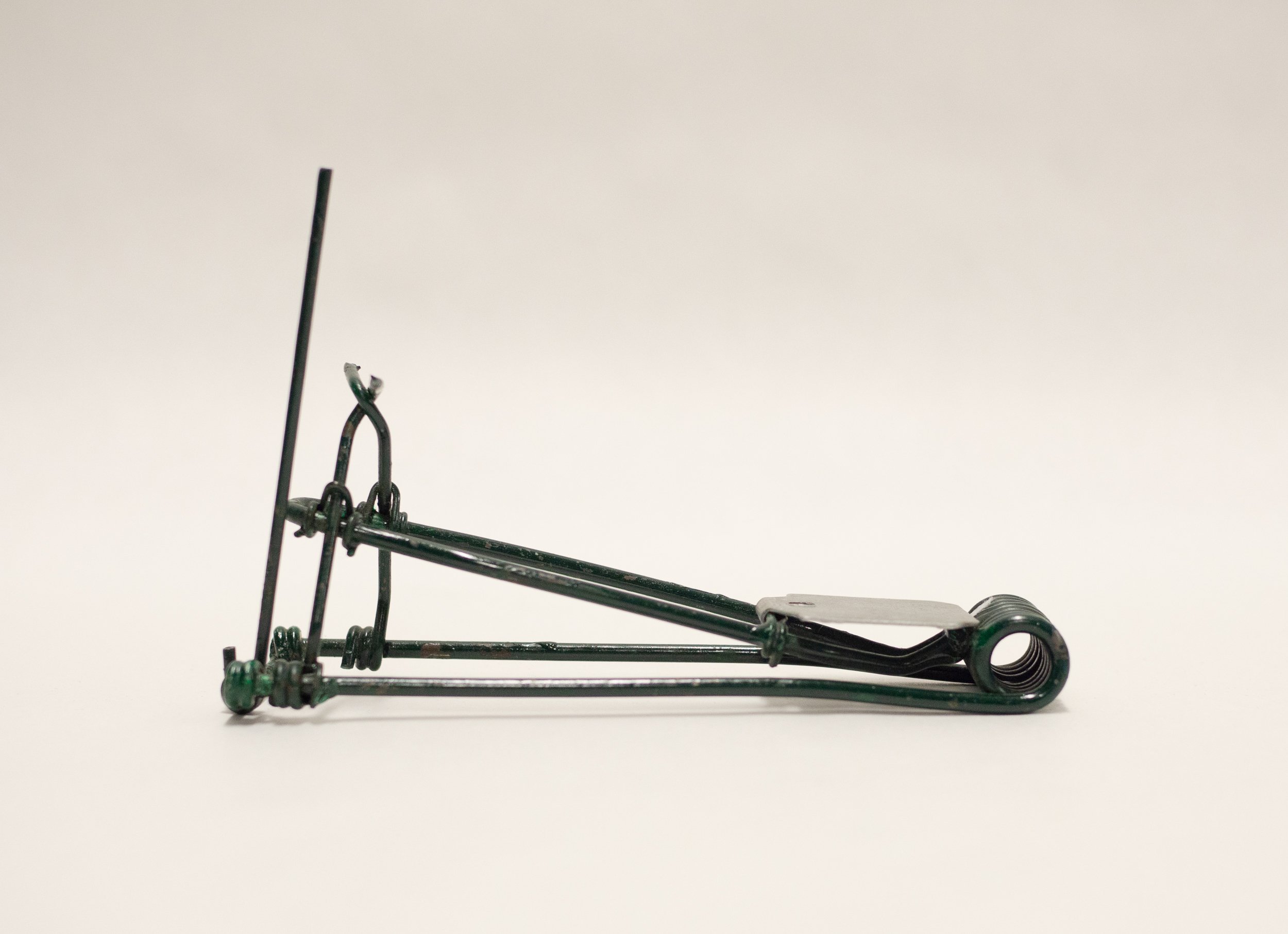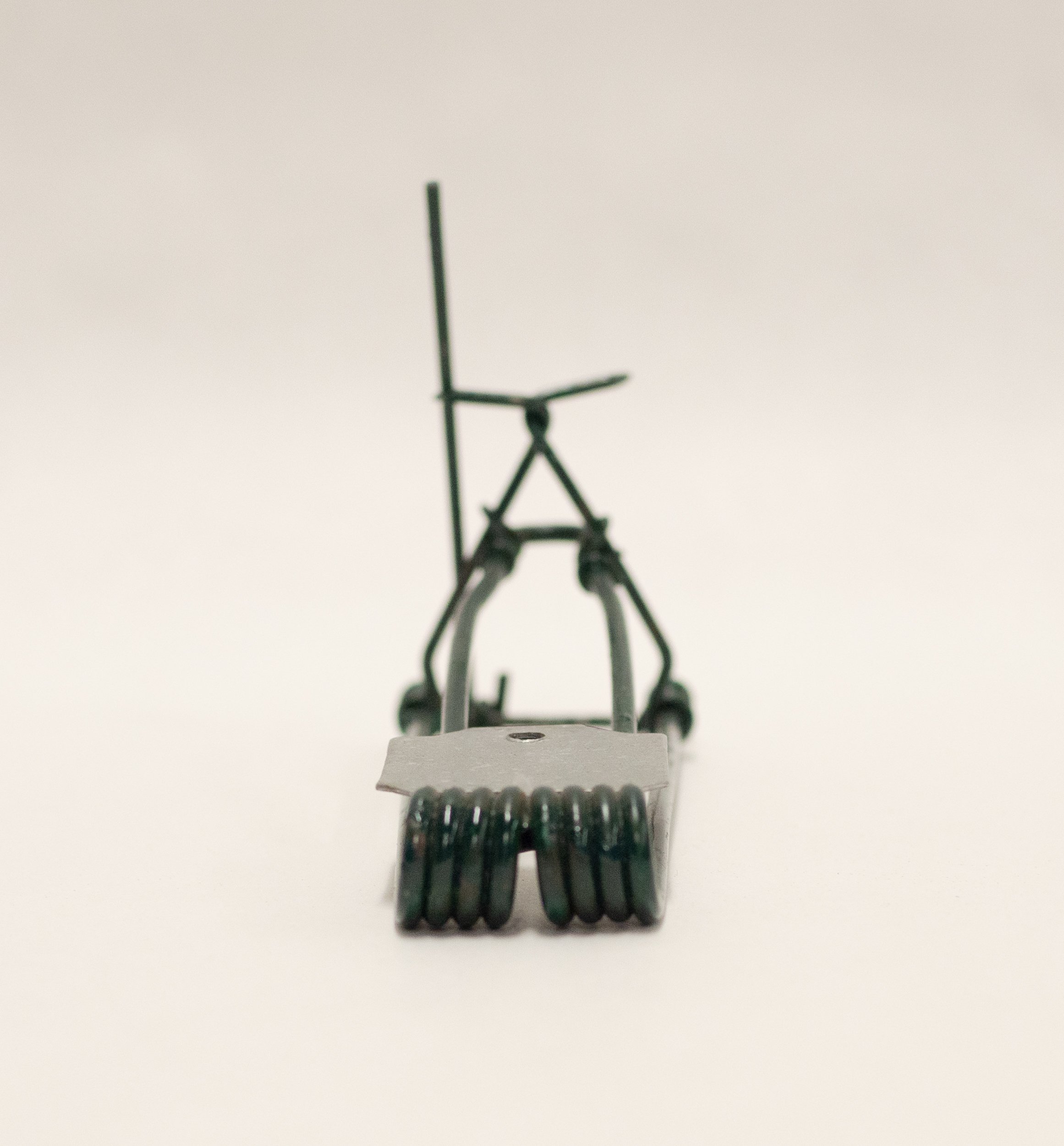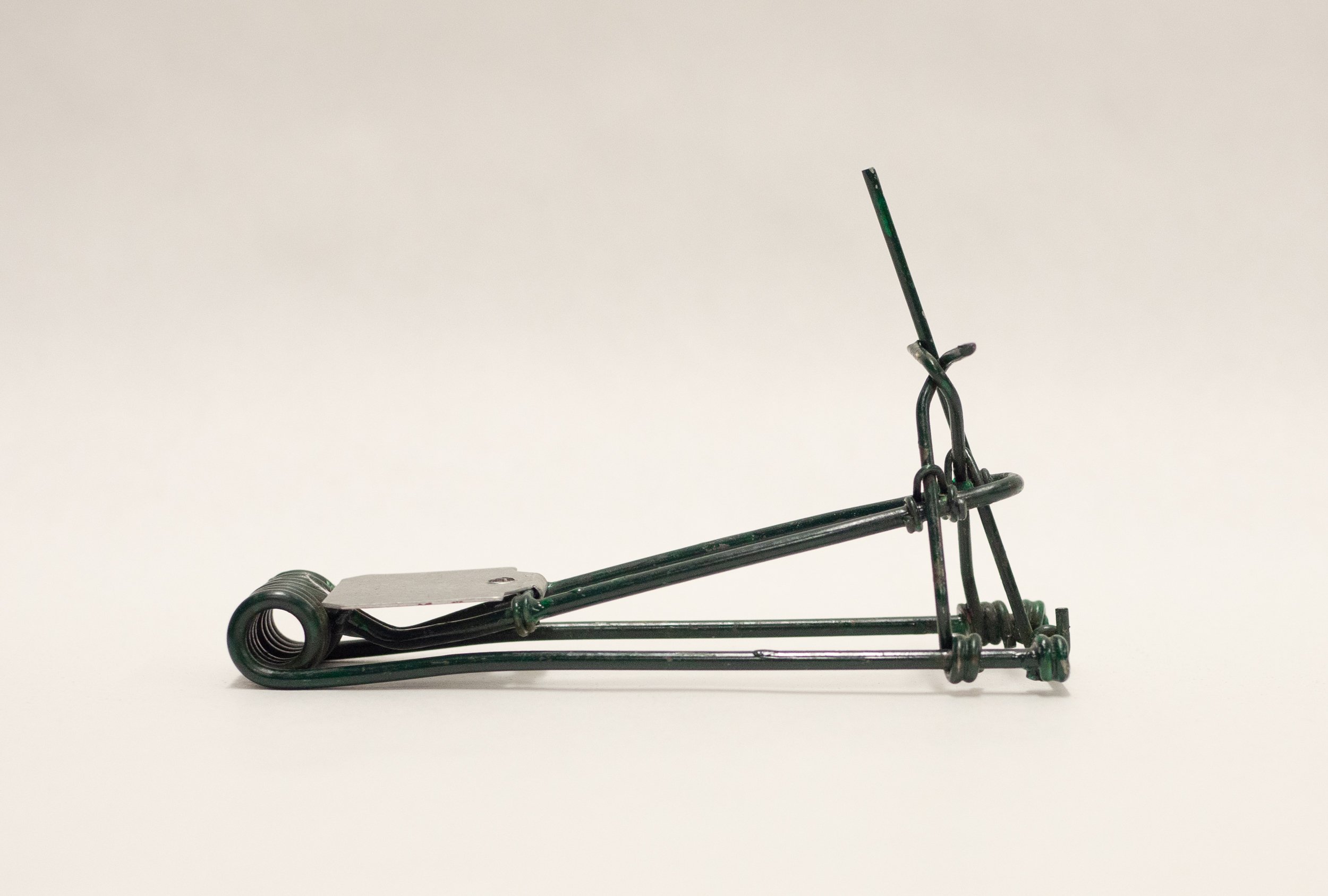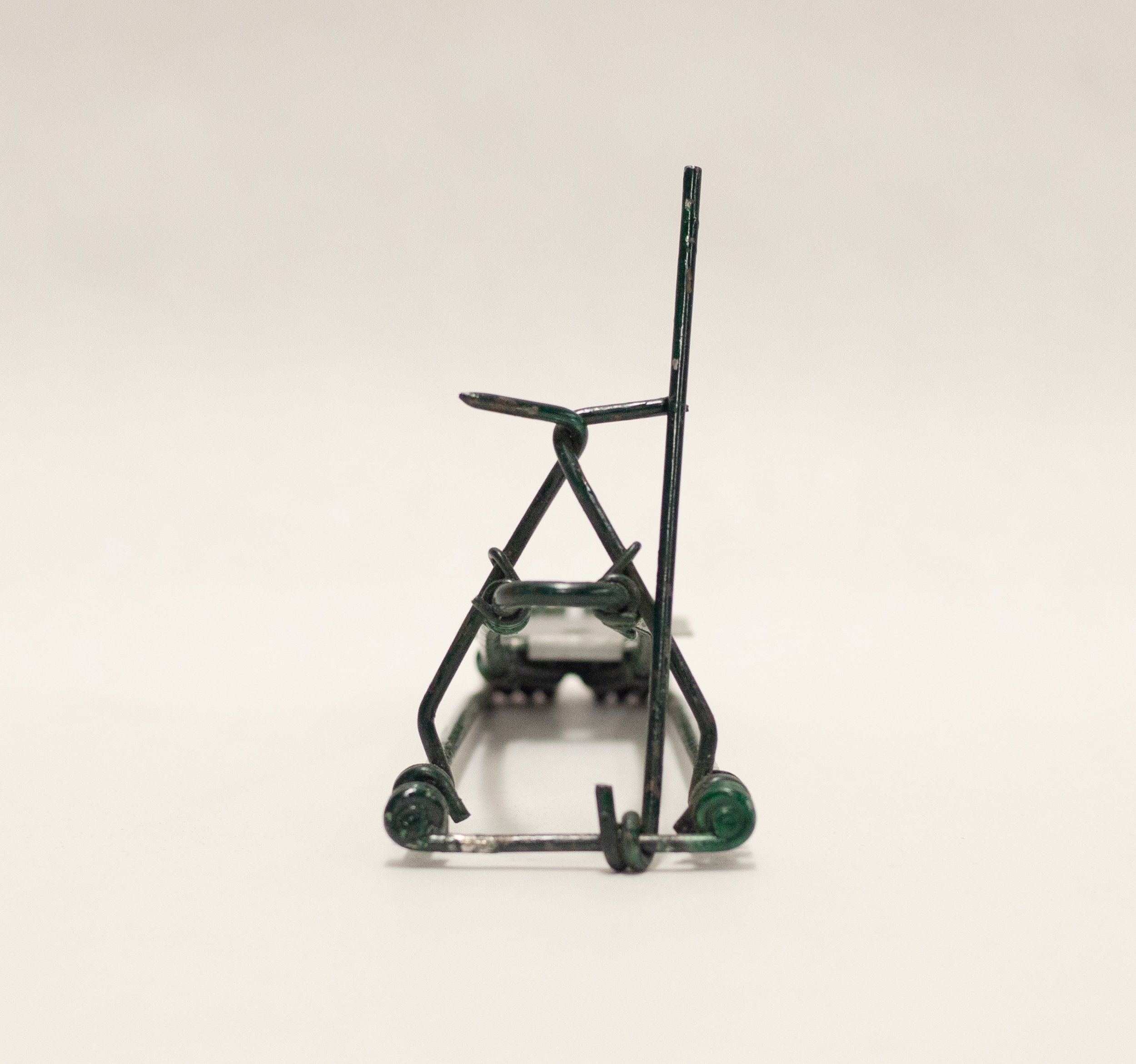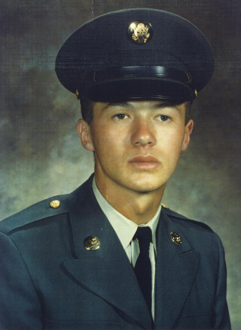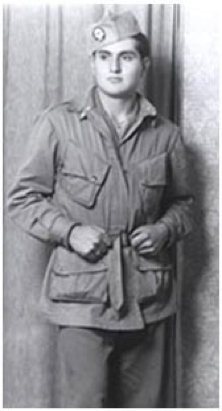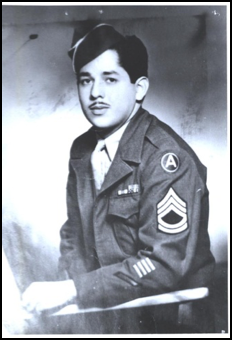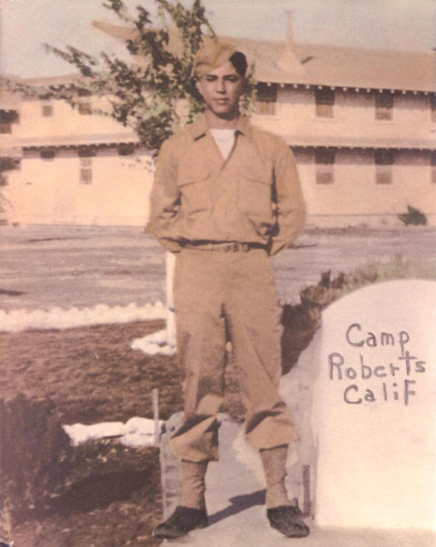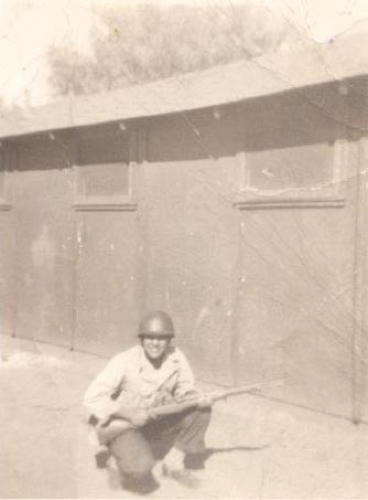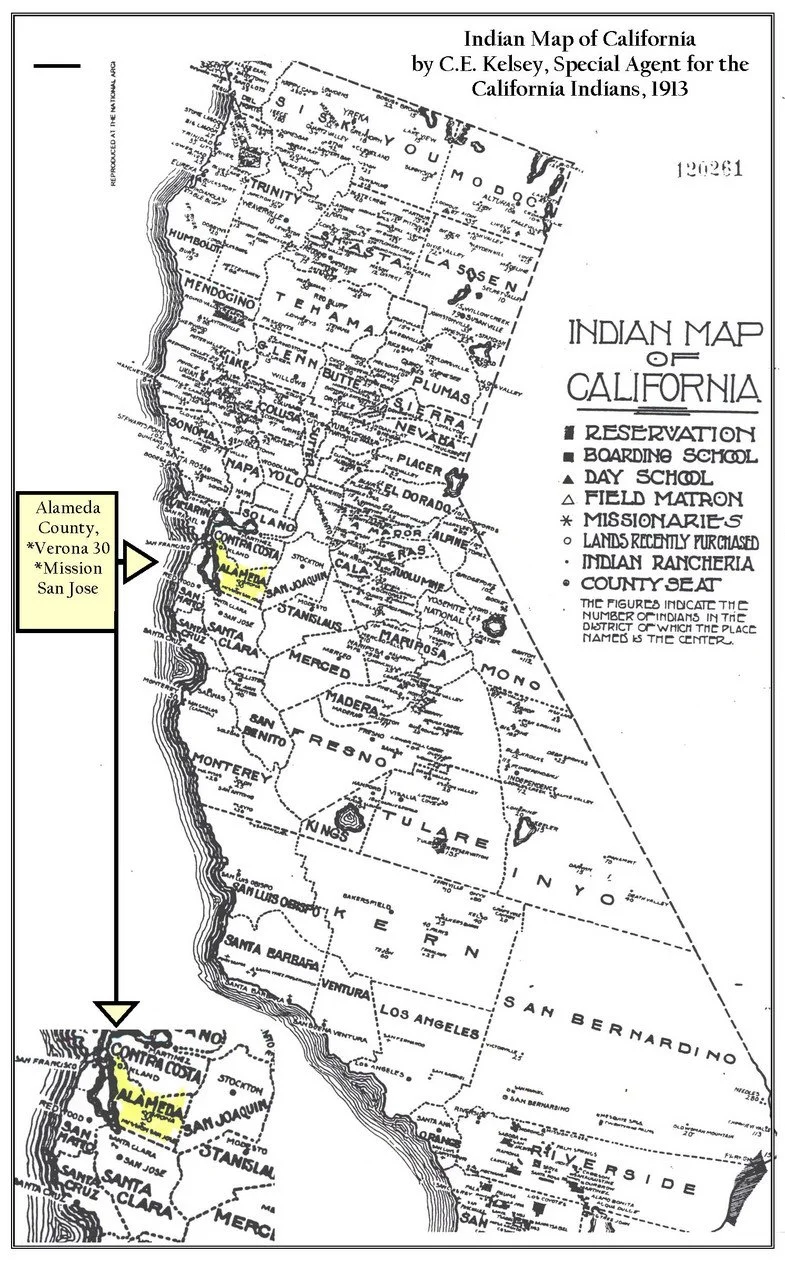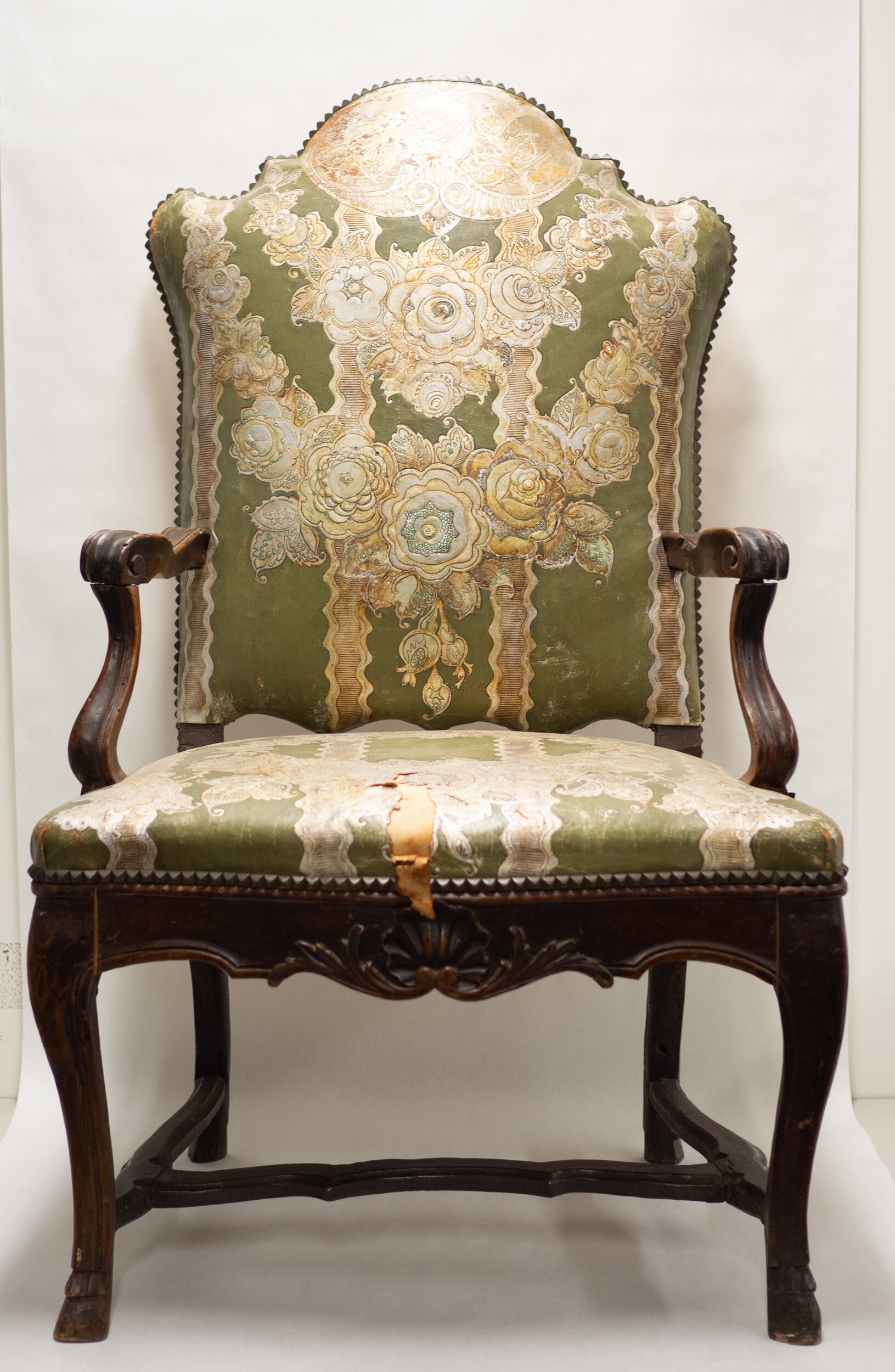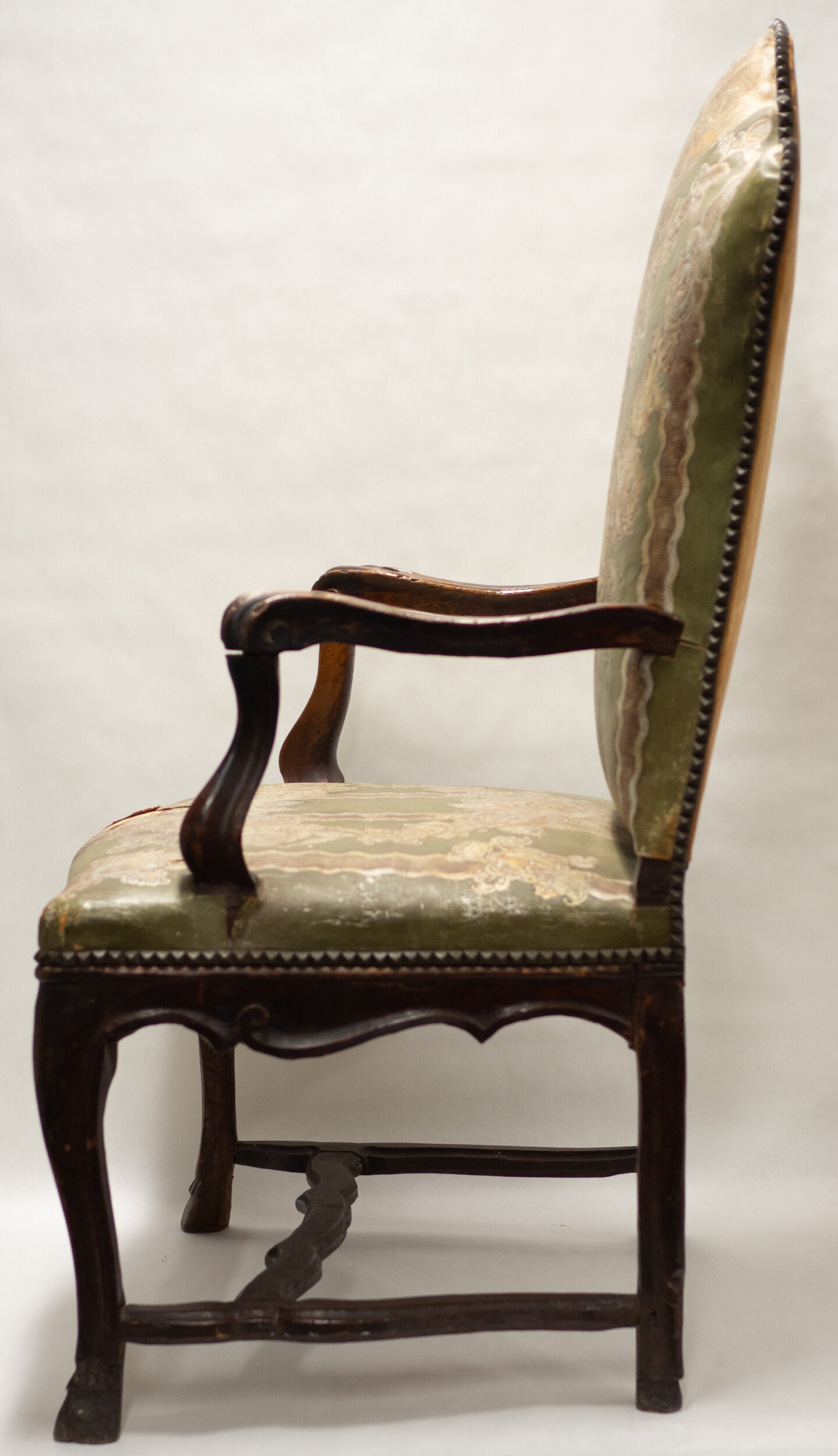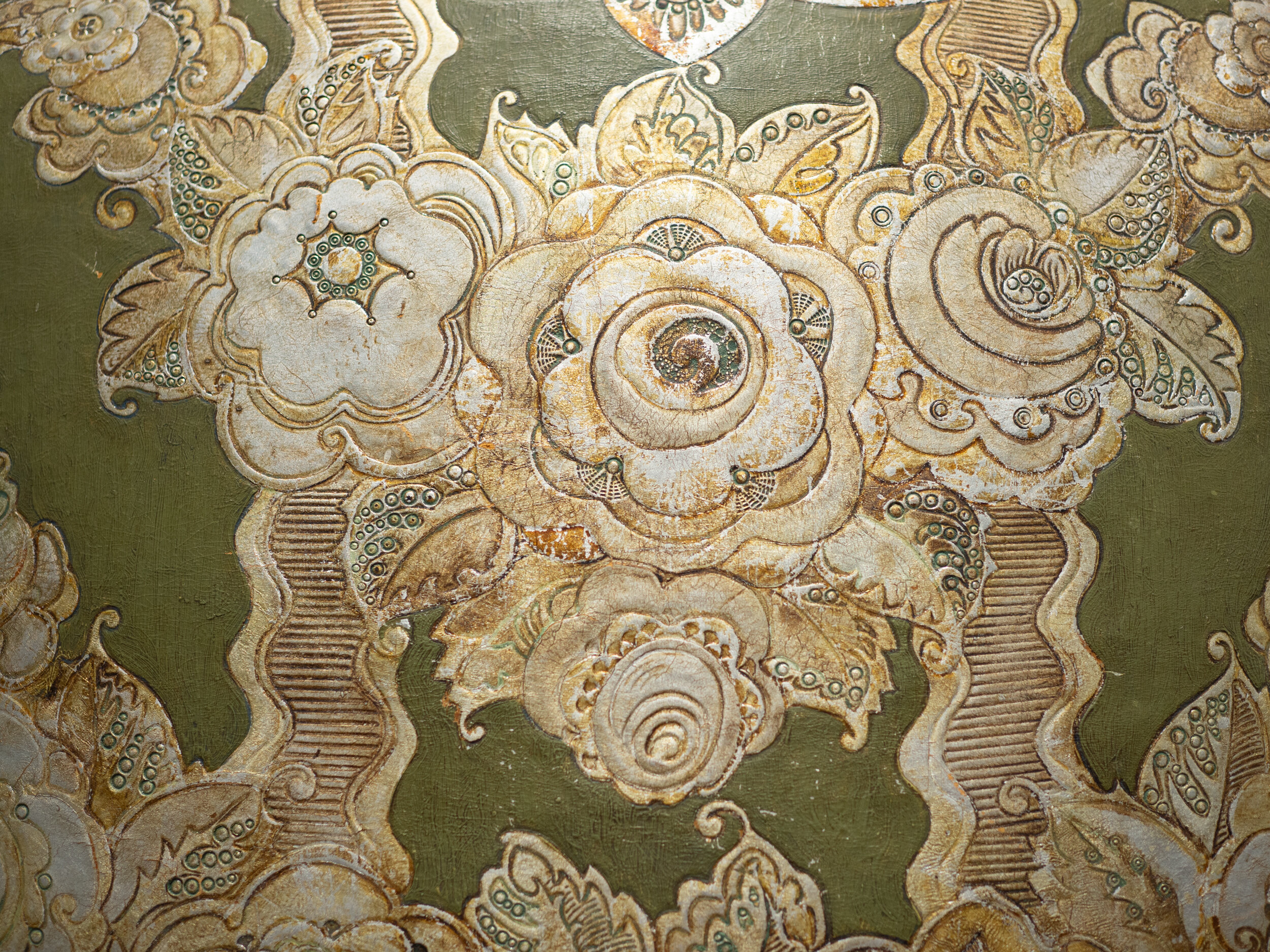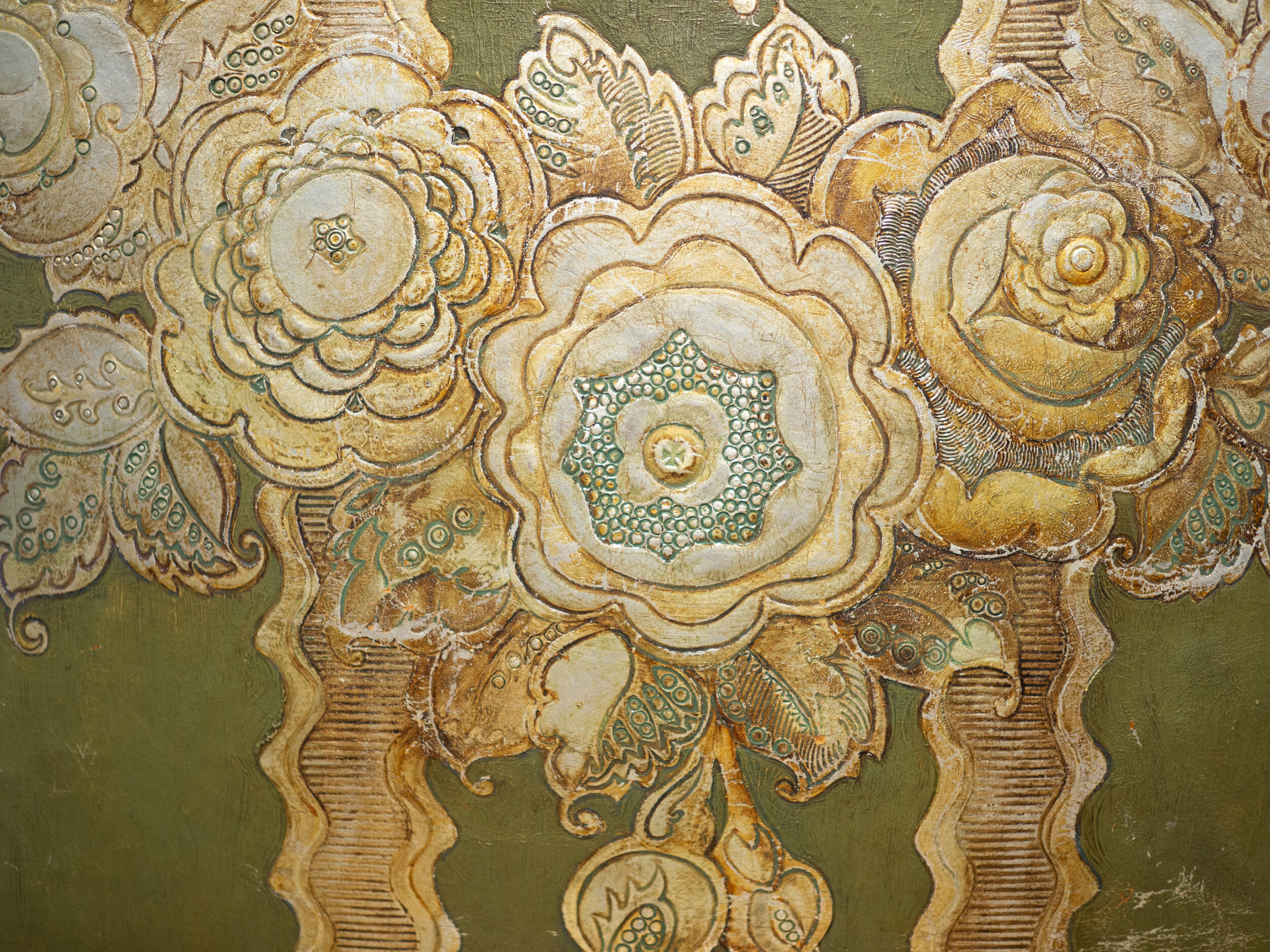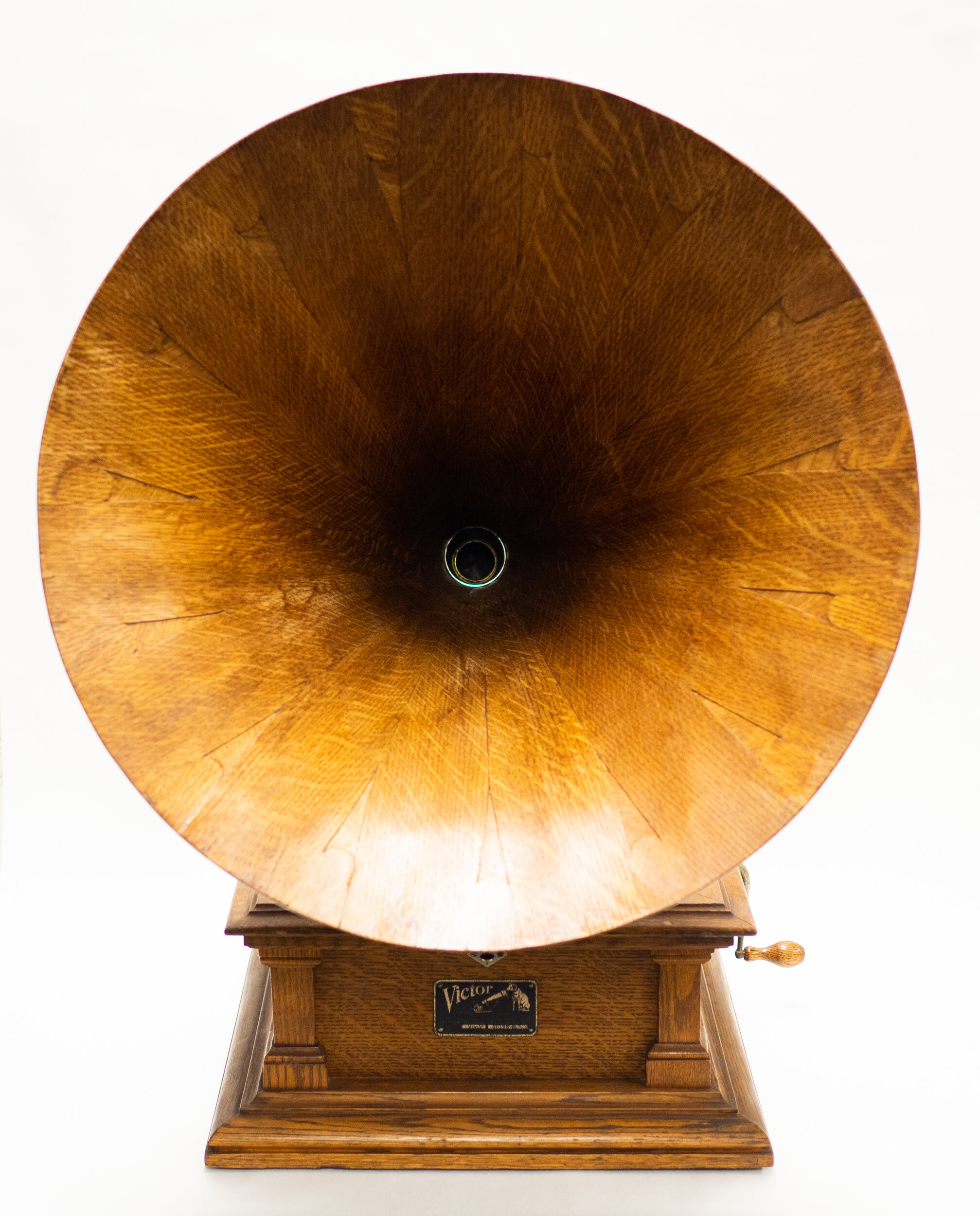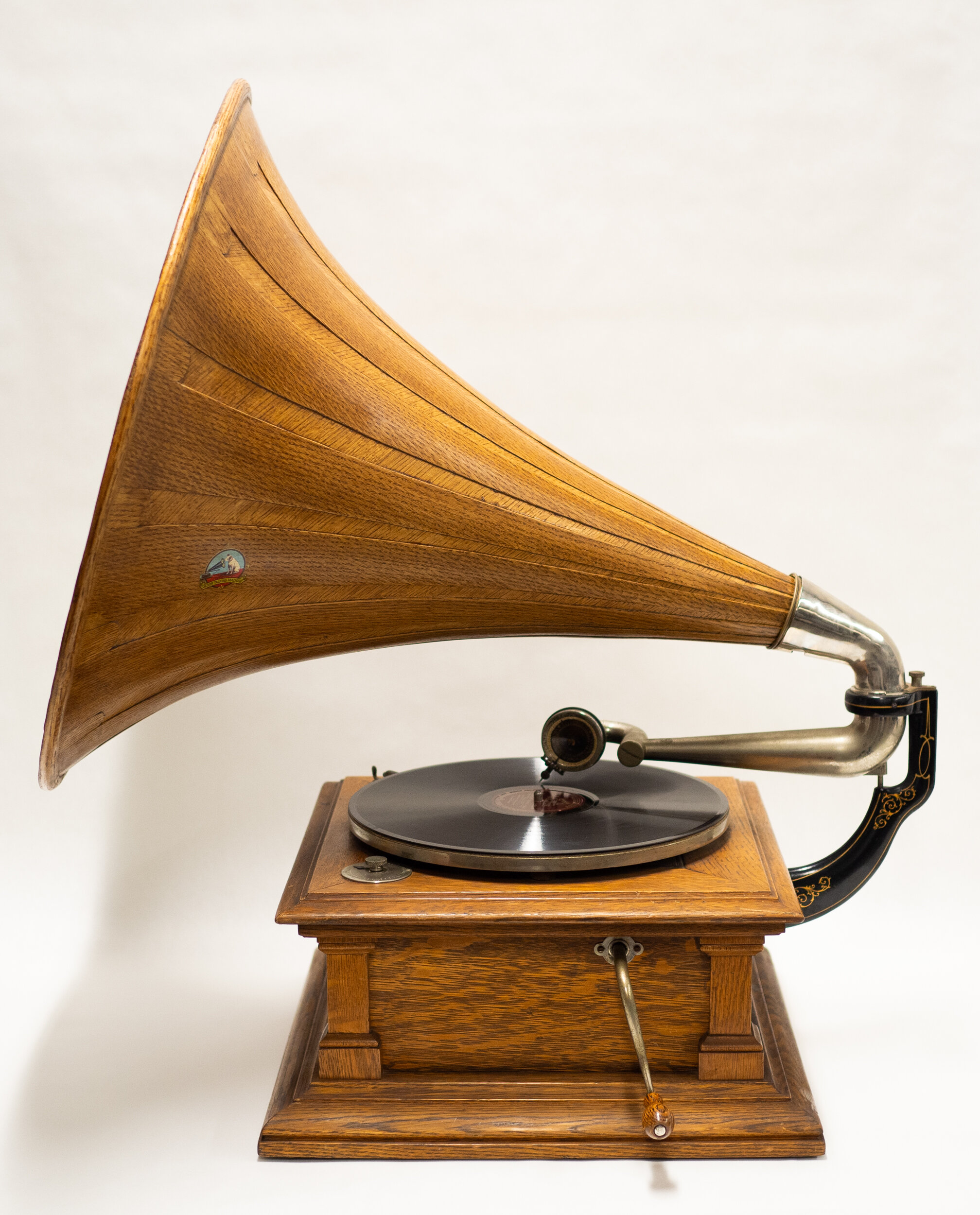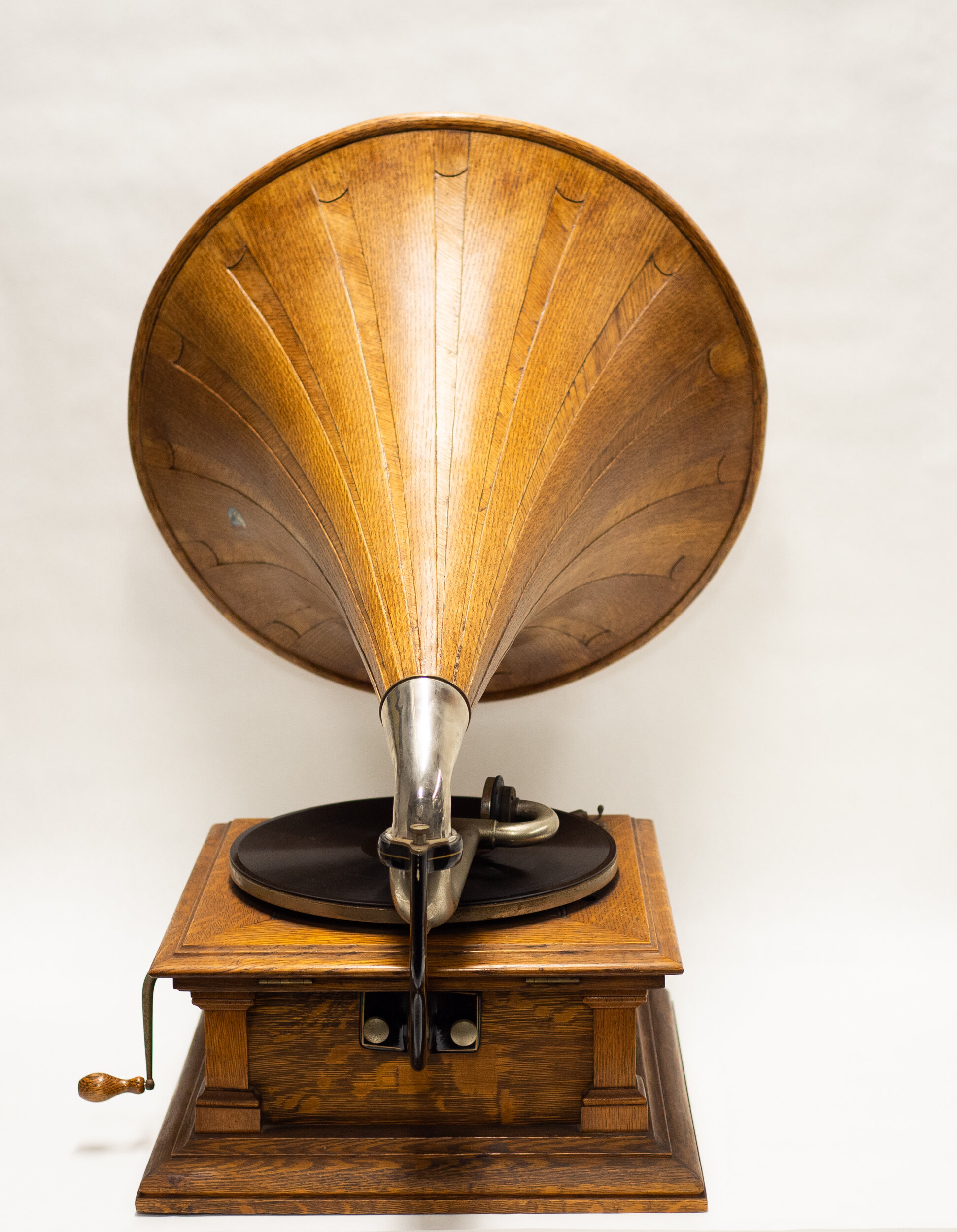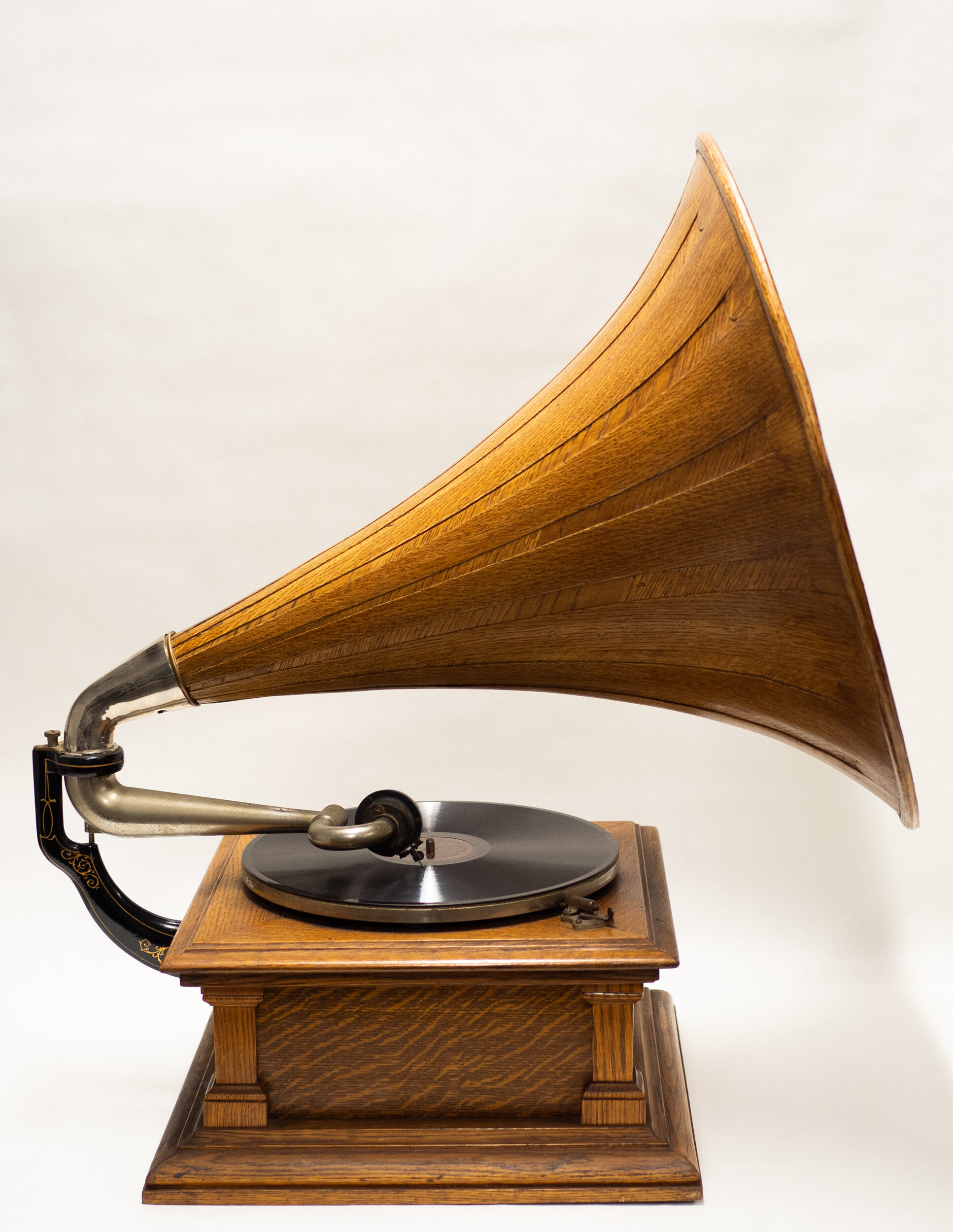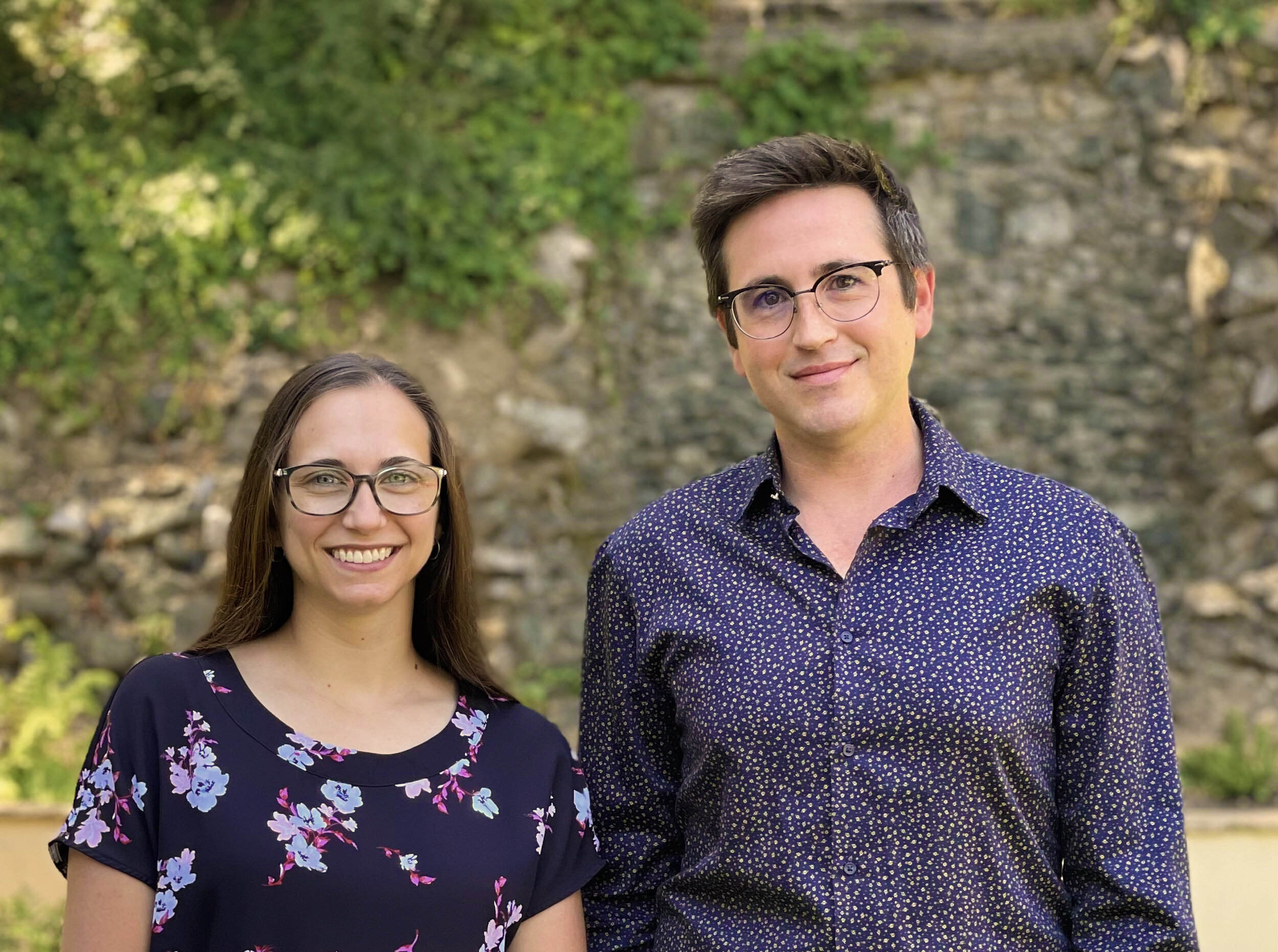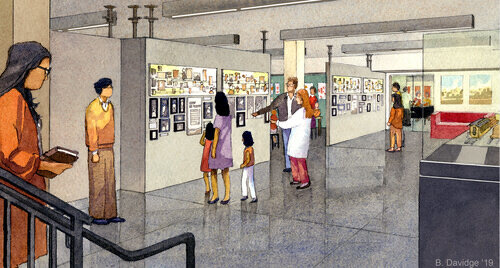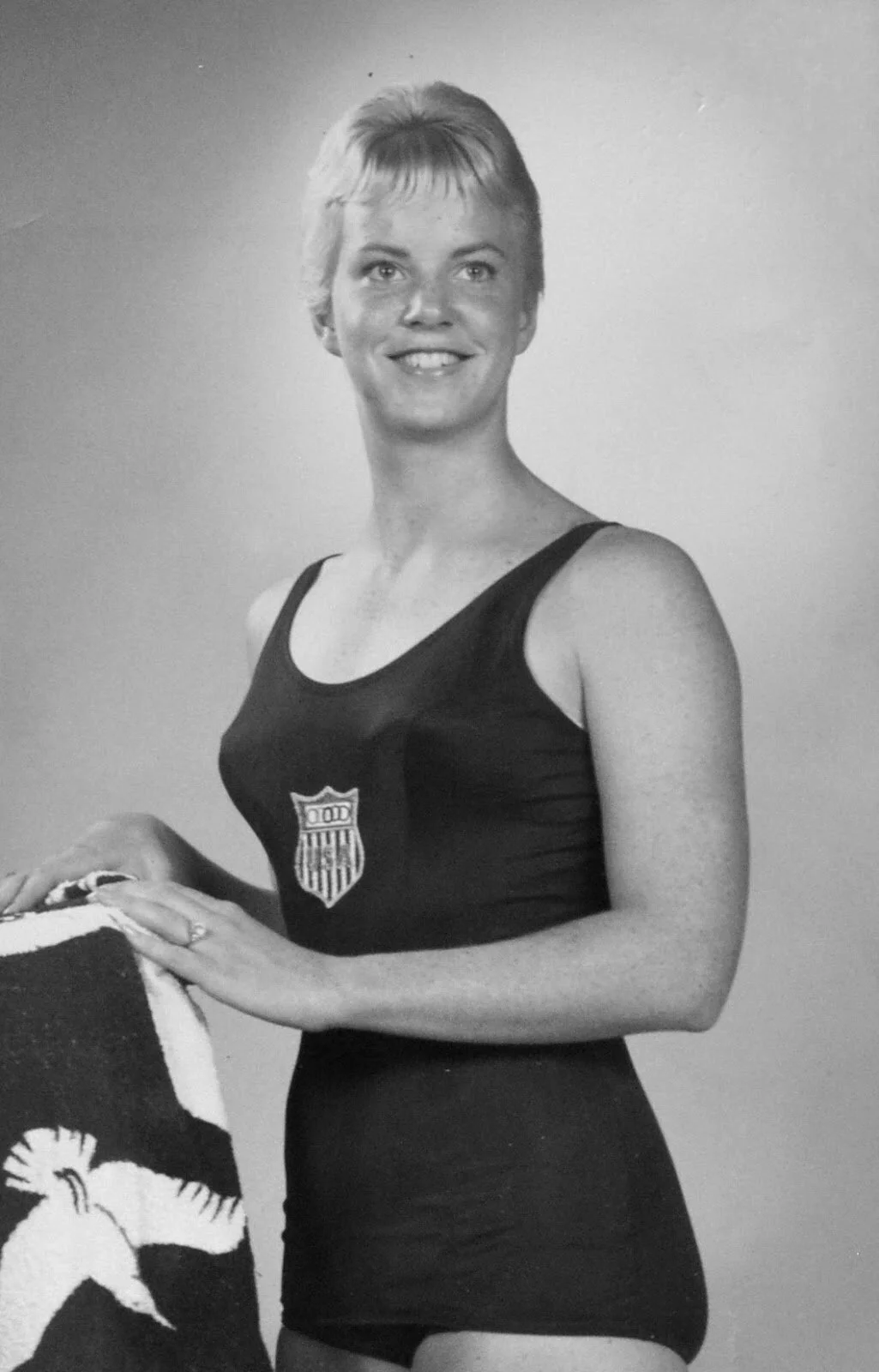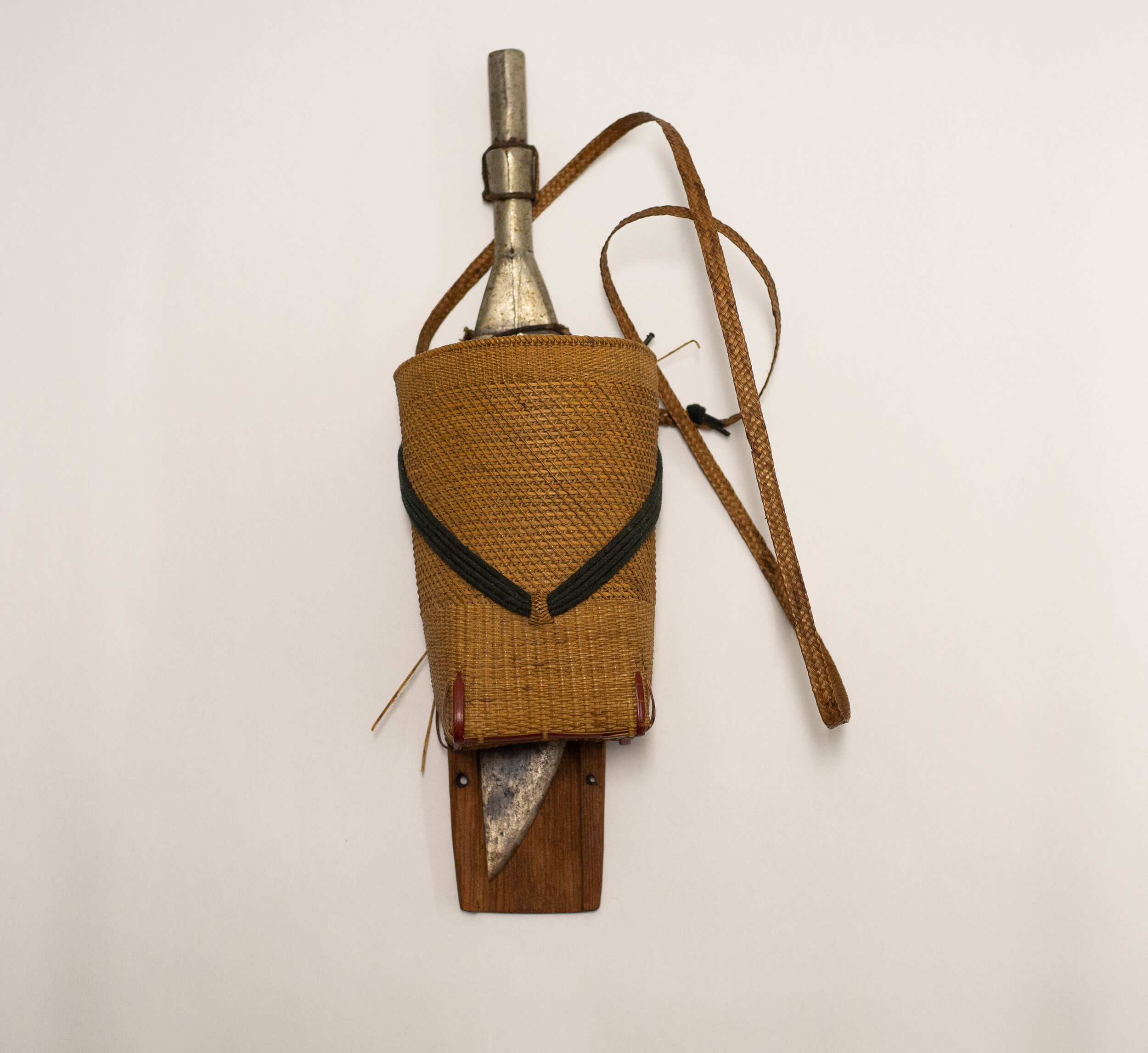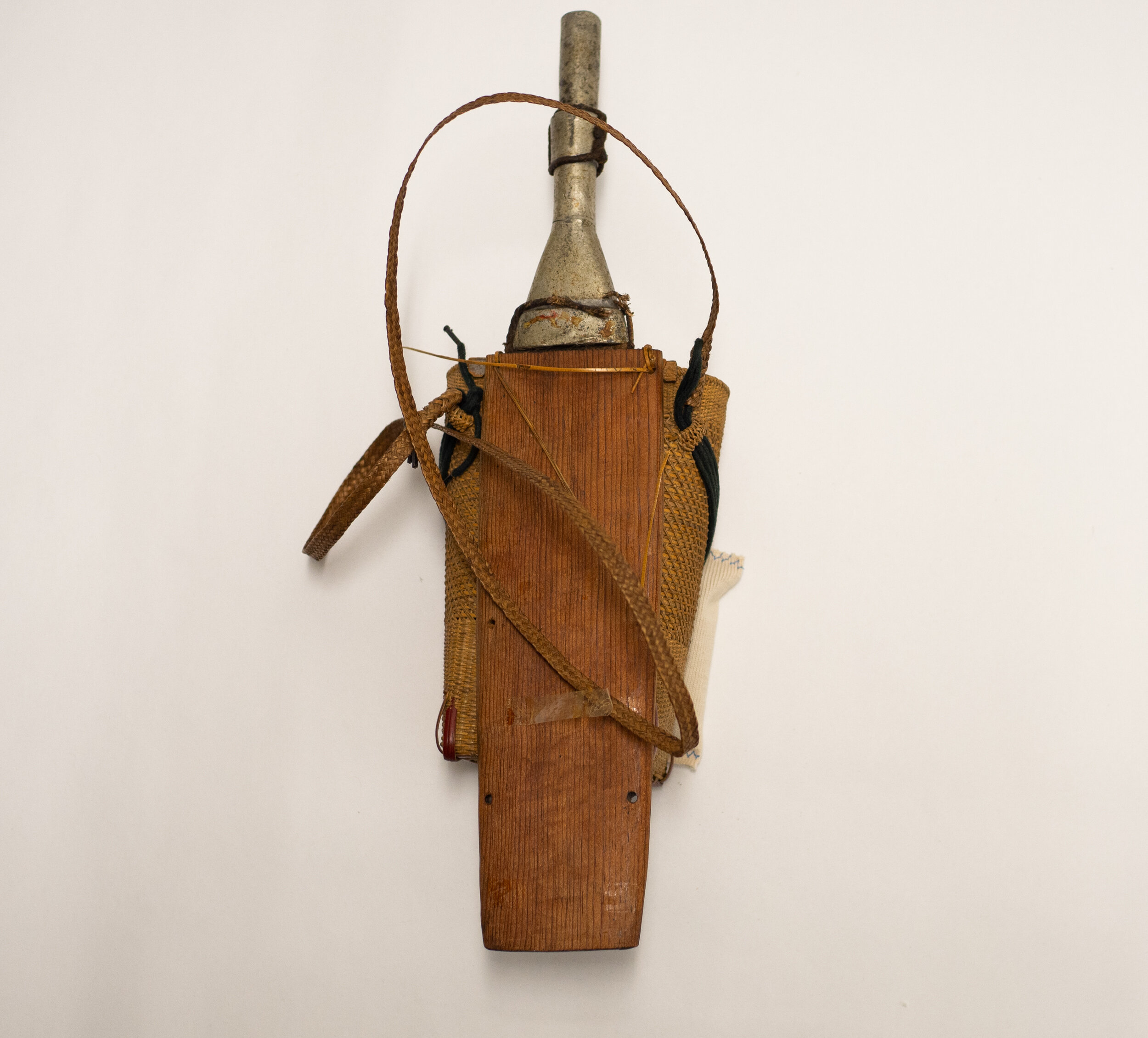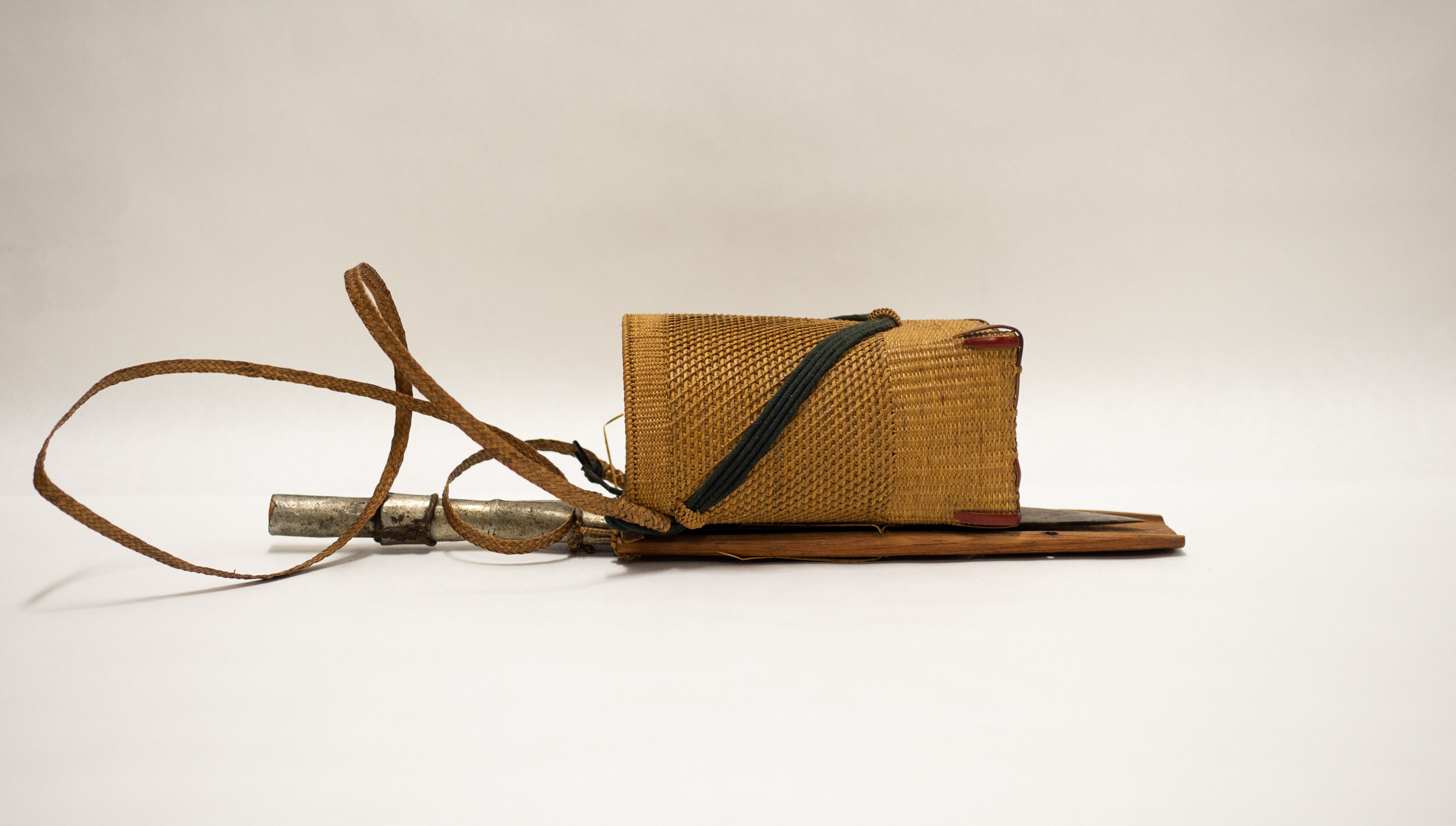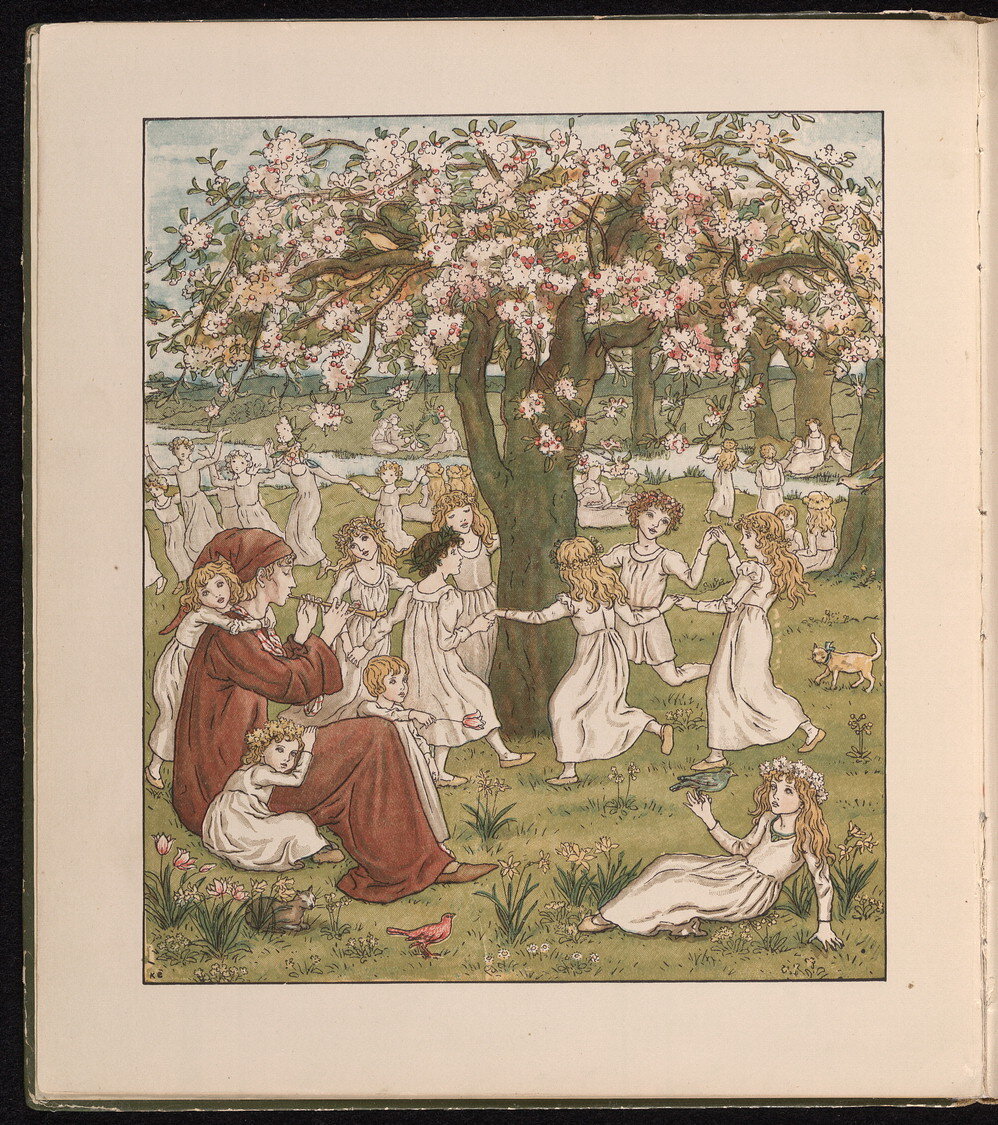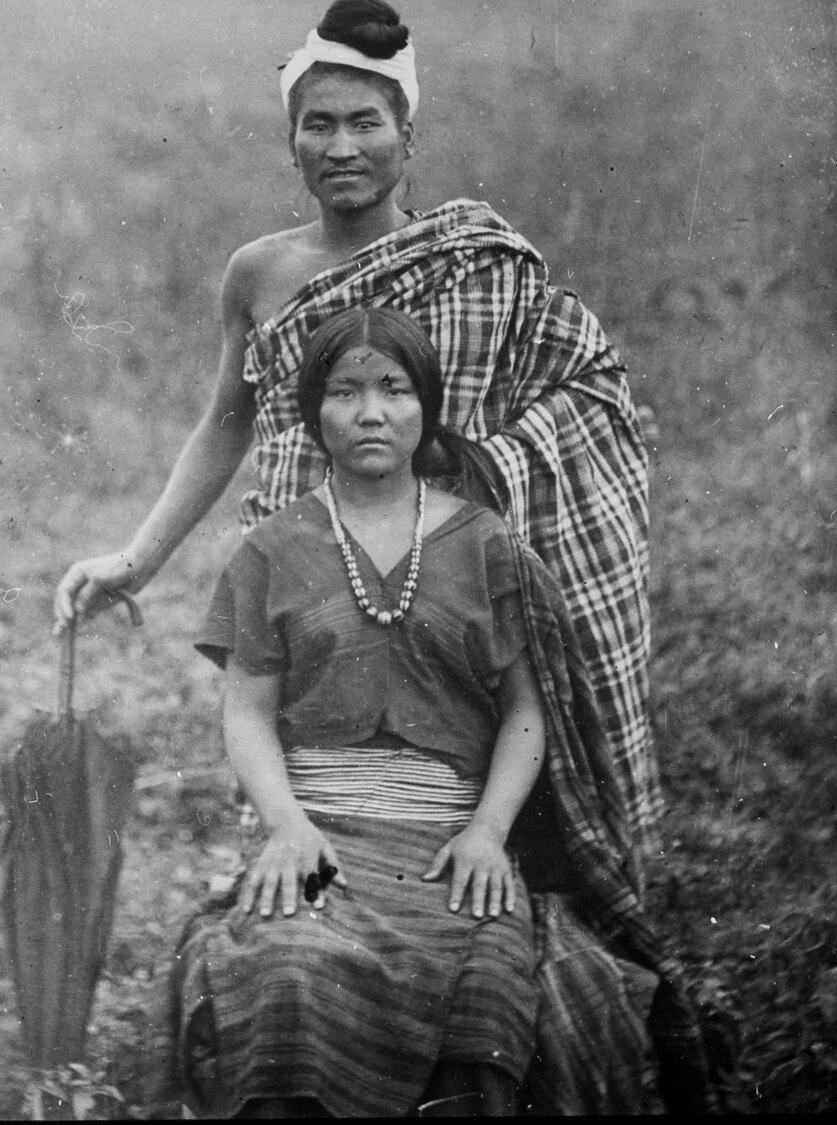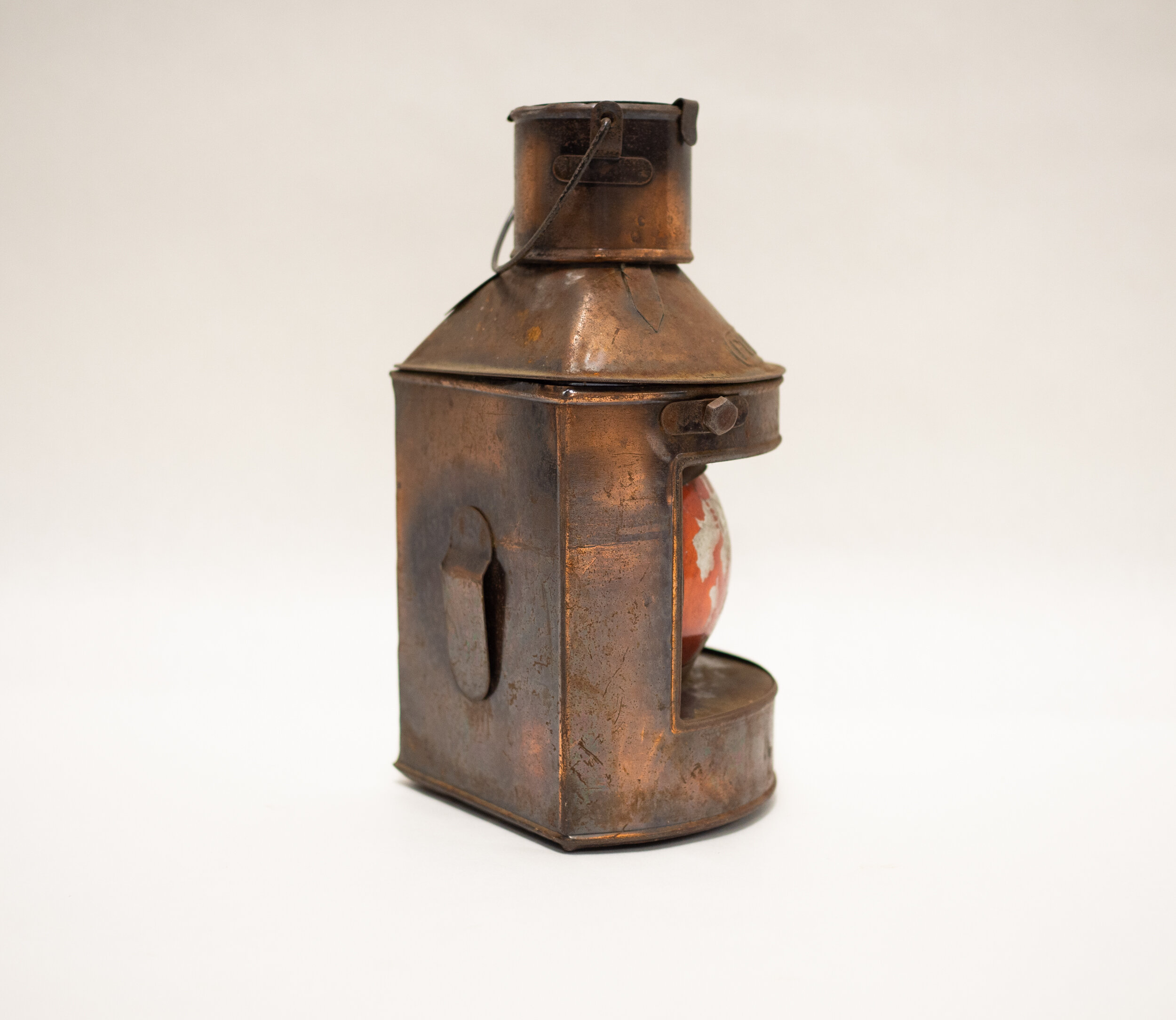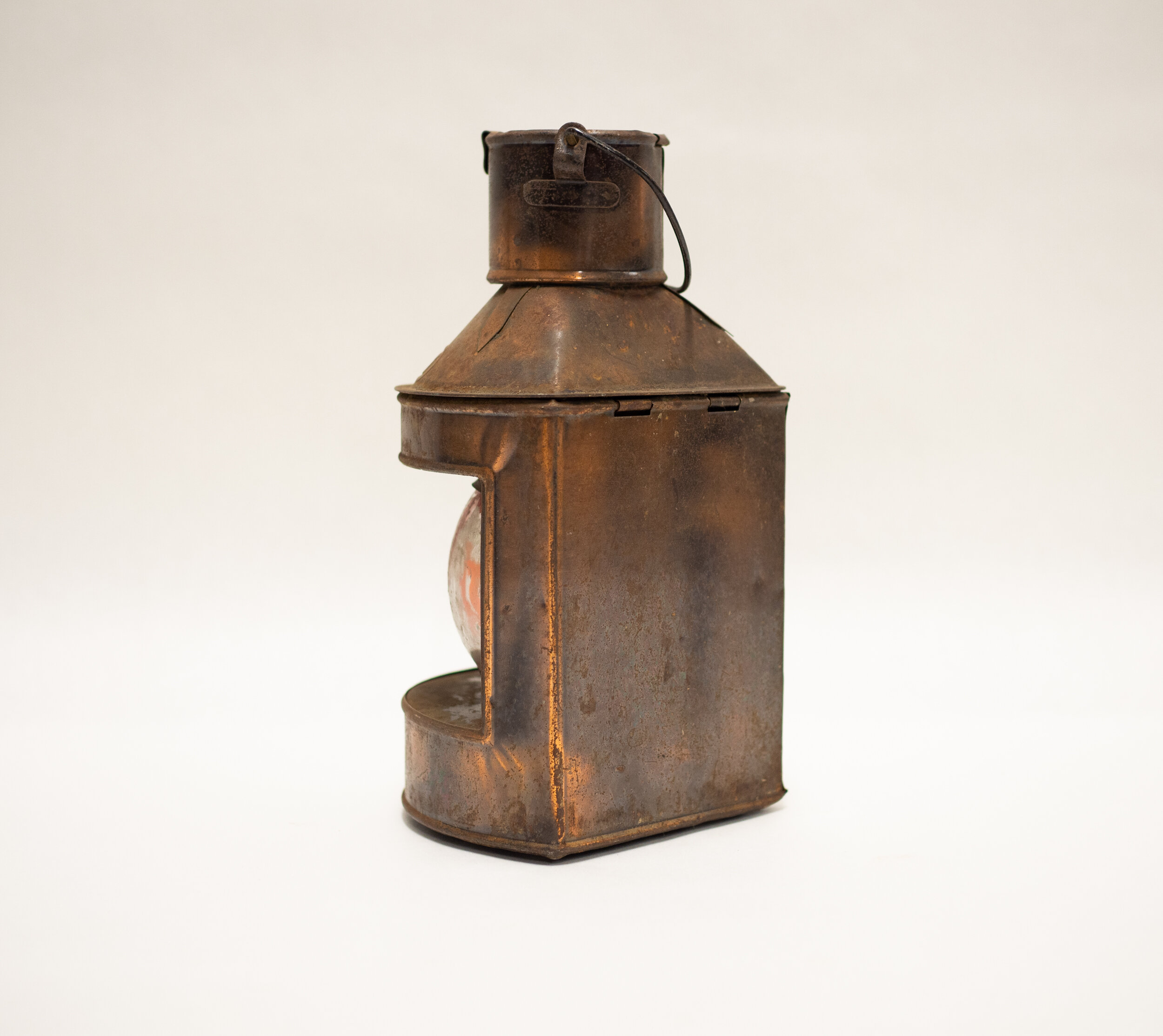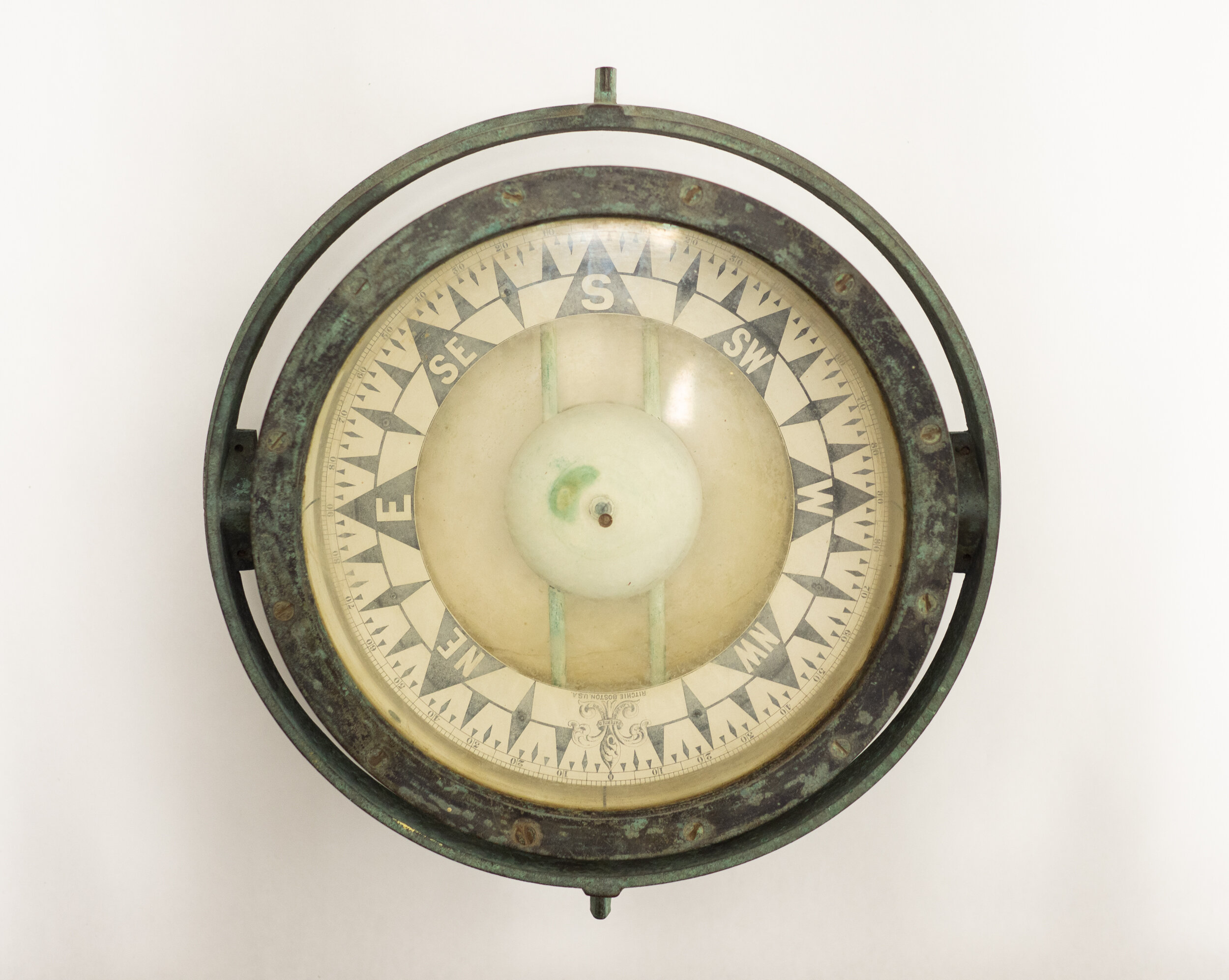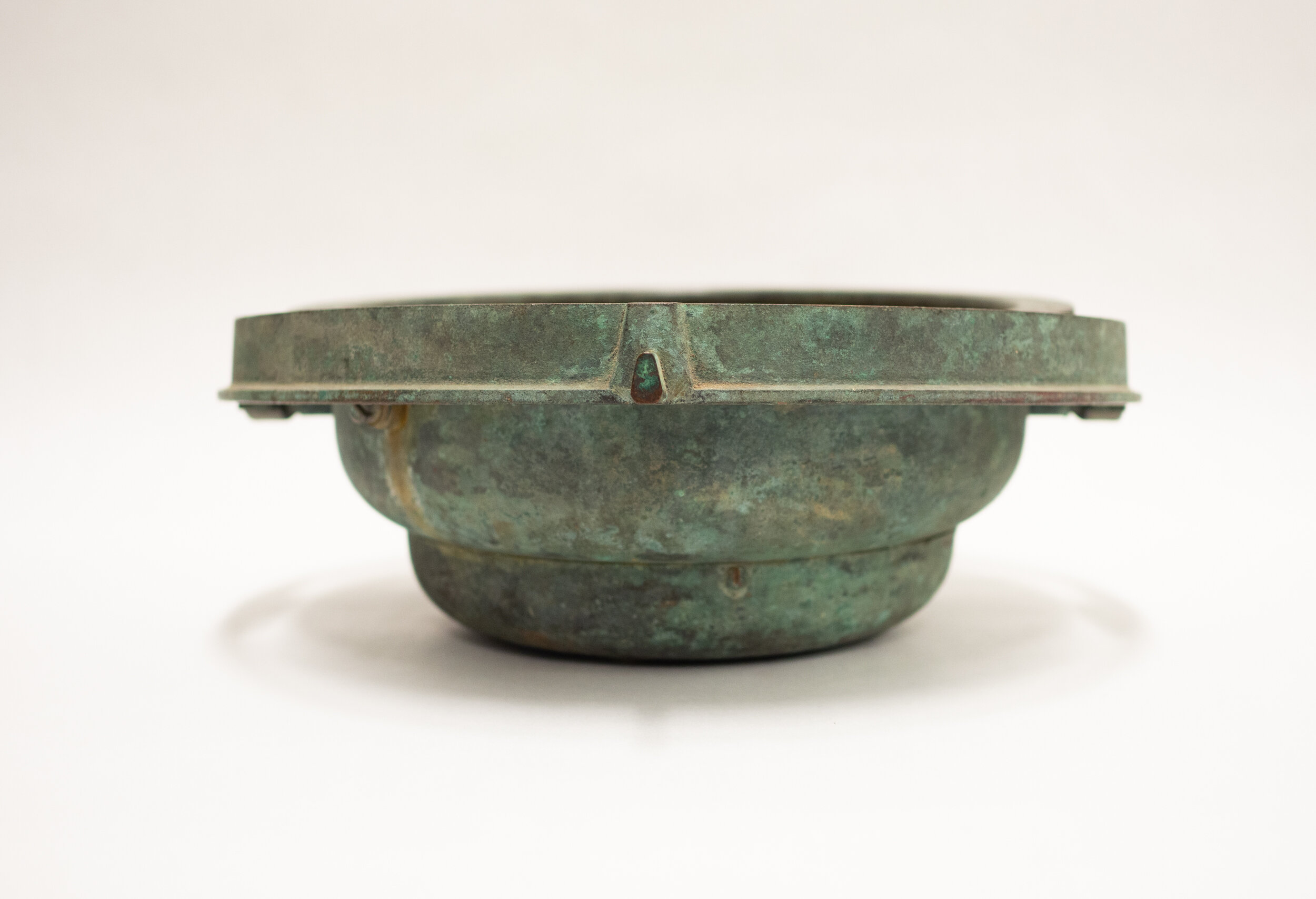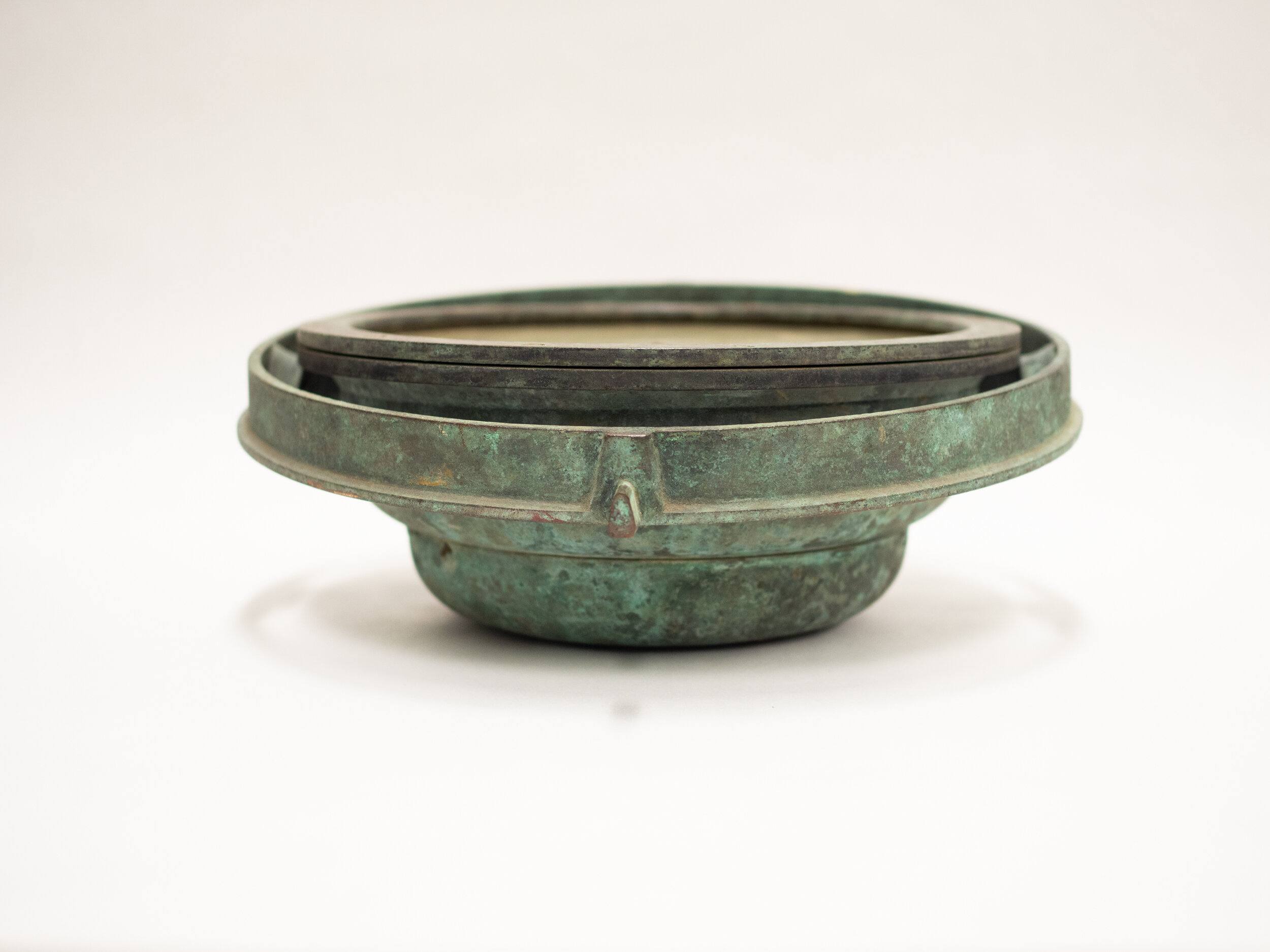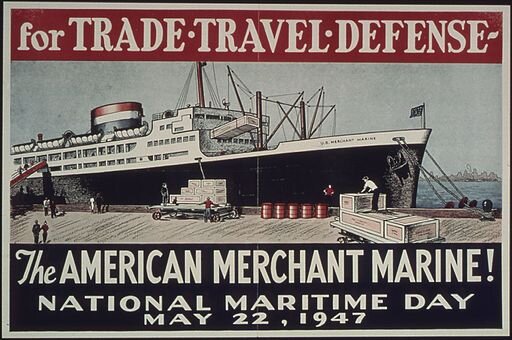An archive of Fun Finds objects featured in the LGHP newsletters. Not receiving our newsletters? Sign up here!
December 2024
NUMU Collection, NU 2022.72
What’s your Roman Empire? For us at NUMU, it’s… literally the Roman Empire. A couple years ago, in early 2022, Alexandra cataloged three very small glass vases that were simply identified as “ancient.” There was no other information or documentation to corroborate this claim that these vases were from antiquity, nor were there any distinguishing marks on any of the vases that could give a clue as to what ancient civilization they could have been from; all three are plain, faintly colored, albeit dirty glass.
Alexandra has spent the last month digitizing the museum’s old donation files, and matching them to their associated objects, when possible. Just a couple of weeks ago, she found the original paperwork (deeds of gift) for these vases, which confirmed their ancient origins! When the vases were donated to the museum in 1976, they included an official appraisal from a local fine arts appraiser, who confirmed that they were from the early Roman era! This dates the vases anywhere from 500 BCE to 193 CE depending on your definition of “early Roman,” making these vases around 2,000 years old! The museum is thrilled to be stewarding these small pieces of ancient history for our local community.
September 2024
NUMU Collection, 2016.8.131
Calling all Disney enthusiasts! This month’s Fun Find is a letter to Billy Jones from none other than Walt Disney himself! Did you know that Walt and Billy were friends? Walt Disney had a lifelong interest in trains and a hobby of building model trains, that he took up after a polo accident. Soon, his interest evolved into miniature, rideable trains, which is where Billy and his Wildcat Railroad enter the picture. Building the Disneyland Railroad was a part of the original plan of the theme park, and during its construction, Walt would visit the Wildcat Railroad for inspiration, and even went so far as offering to purchase Billy’s locomotives, believing that purchasing existing trains would save money. However, Billy turned him down, and Walt realized that he wanted larger locomotives anyway, and had the Disneyland Railroad and its trains built from scratch. The two remained friends though, with Billy serving as one of the operators of the Disneyland locomotives on the park’s opening day in 1955. Noted Disney animator Ward Kimball even designed the logo for the Wildcat Railroad.
The letter itself is fairly casual - Walt is declining an invitation to Billy’s (nicknamed Casey) picnic because he would be going to England to shoot a live-action movie, likely The Story of Robin Hood. Walt wrote the letter on Carolwood Pacific Railroad stationary, which was his own personal backyard miniature railroad! Built at the same time as his house in the Holmby Hills area of Los Angeles, Disney operated his railroad from 1950 to 1953, even going so far as to have a Walt Disney Company lawyer draw up a faux legal contract granting him the ability to own and operate the railroad, that his wife and two daughters signed. The Carolwood Pacific Railroad was open not only to visitors of the Disney home, but also to the public. However, an accident involving a visitor prompted its permanent closure. Disney then began focusing on developing the Disneyland Railroad.
You can come see this letter for yourself, on display soon in new interactive displays in the Collections Lab!
NUMU Collection, 2011.700
July 2024
This month’s Fun Find is an object that our most recent intern, Teddy Hardgrove, wrote about in a blog post - keep reading for what he had to say about the samurai battle helmet in NUMU’s collection!
“Local history is full of richness and wonder once you look just under the surface. It’s amazing what artifacts belong to the people of a small town such as Los Gatos. One such case is the Samurai Battle Helmet or Kabuto found in our collection in April 2024. While we have not had this professionally dated, based on the style and patterns of wear it is likely from the Edo period of Japan, 1603 to 1868. The Edo period began with the establishment of the Tokugawa Shogunate; the historical events leading up to this event largely inspired James Clavell’s classic novel Shōgun, recently adapted to the popular streaming show on Hulu of the same name.
The Edo period was categorized by a strict class system. The emperor and court nobility formed the nominal ruling class, but the shogun held most of the real political power. Under the shogun were the regional lords, or daimyos, whom the samurai class served. Samurai were originally aristocratic warriors - roughly equivalent to knights of the European feudal system - but due to the political stability of the Edo period they predominantly filled administrative and stewardship functions. During the Meiji Restoration, which began in 1868, and later the post-war period, the samurai class and its privileges were gradually abolished. Most people in Japan today do not keep track of their aristocratic heritage.
It is unclear how this helmet arrived in our collection, or who donated it. Most kabuto helmets have a crest (or datemono). This helmet has a peg (known as a tsunamoto) where this would have been attached, but the crest is missing, which makes it difficult to identify. The ear-like tags on the sides of the helmet’s visor are called fukigaeshi. The neck guard on the back of the helmet is called a shikoro. This kabuto also comes with a half-face mask. These often are decorated with a fake mustache and goatee and are contorted into a sneer, in order to intimidate enemies on the battlefield. NUMU Los Gatos hopes to find an expert to help further identify and confirm the age and origin of this unique piece.”
May 2024
NUMU Collection, 2020.7.1
With graduation season swiftly approaching, we thought it would be fun to take a stroll down memory lane and highlight some fantastic Los Gatos High School items in our History Collection! Many of these recently-cataloged clothes and uniforms were donated to the museum after our 2018-2019 Sis Boom Bah exhibition, and bring us all the way back to LGHS during the 1940s, 1960s, and 1970s. This sweater, featuring the iconic orange ‘LG’ block letters, belonged to Geraldine Jones, the daughter of Billy Jones, and was donated by her daughter Priscilla Peters. This orange cheerleading uniform, bringing us to the 1960s, was generously gifted to the museum by Barbara Ives. And Cathi Kenneally Burnham donated her orange and white Spirit Team uniform as well as her block letters from the 1970s, both of which feature a variety of pins and decorations. Items from his time at LGHS in the 1950s were also a part of Bill Wulf’s recent donation, including his student ID card. It’s fun to compare this high school memorabilia with our own high school memories, and even to compare our memorabilia to today’s. We offer our congratulations to all of this year’s high school graduates!
January 2024
NUMU collection, NU 2023.750
Calling all fans of The Gilded Age! If you’ve been keeping up with season two of HBO’s hit period drama, you’re aware of the opera war between Mrs. Bertha Russell (the character based on Alva Vanderbilt) and Mrs. Caroline Astor (the character portraying Caroline Schermerhorn Astor). Russell, having been denied a box at the Academy of Music by Astor and the established socialites of New York, decides to support opening a rival opera house – the Metropolitan. The Metropolitan (Met), supported and funded by Russell and the other nouveau riche of the era, had its opening night in direct competition with the Academy’s opening night for their season in 1883. And, as Russell dramatically reveals at her dinner party, the lead in the Met’s inaugural opera, Don Giovanni, is none other than Christine Nilsson, a famed singer who had since only ever performed at the Academy. That plot line is based on historical fact - the Met really did open on the same night as the Academy, with Nilsson as its star performer.
As our intern Hope was cataloging the Frank Ingerson and George Dennison collection, she just so happened to come across a trove of opera programs from New York during the late 1800s and early 1900s. While we don’t know exactly why they kept these programs, we speculate that either one of “the Boys,” during their adolescence, or someone in their lives, enjoyed going to the opera. And, believe it or not, there is a program from the Metropolitan’s first production, featuring Christine Nilsson! Although not from the actual opening night, which was October 22nd, someone went to see Don Giovanni on November 28th, 1883, just about a month after the Met opened! It’s fun to imagine who could have been attending that opera, and what other members of New York’s exclusive high society might have been there. This discovery definitely thrilled our Gilded Age-obsessed staff!
September 2023
NUMU collection, NU 2023.302
While going through boxes to choose objects to exhibit in the Collections Lab, NUMU’s new Curator, Allison Railo made an exhilarating discovery of portraits depicting Charles McKiernan’s (better known as Mountain Charlie) wife and daughters! While the story of Mountain Charlie is a local legend (you can view his portrait in the museum’s History Hall), the stories of the women in his life are much less well-known.
There is almost no information to be found about Mountain Charlie’s family; very few accounts about him even mention his wife Barbara, and if they do, they only mention their marriage, not any details about their life after that. Information about his children is even scarcer; there are few mentions of their seven children, and fewer still of their names or what became of them. The most common mention is that one of their sons died very young in a gun accident. Barbara Kelley was an Irish immigrant and nurse who married one of her post-surgery patients - Mountain Charlie. Together, she and Charles had seven children, including Kathryn, Molly, and Helen (pictured). This black and white portrait photograph of Barbara was taken around 1890, after the McKiernan family had moved to San Jose from the Santa Cruz Mountains. The hand-colorized portrait of Kathryn (left), Molly (center), and Helen (right) is likely from the same time period. The LGHP team is thrilled by the discovery of these portraits, and the chance to finally put some faces to four women that history has forgotten. Hopefully, more information about them will be discovered in the future!
July 2023
NUMU collection, 2016.8.42
Over the past month, Alexandra has been steadily working on cataloging a 2016 donation of items relating to Billy Jones. The collection was donated to the museum by his daughter and granddaughter, Geraldine Peters and Priscilla Peters respectively, and includes a wide variety of items relating to both the Jones family and the Wildcat Railroad.
William “Billy” Jones was born and raised in Ben Lomond, and began working in the railroad sector when he was just 13 years old. He ended his career with Southern Pacific Railroad in 1950, where he had been running trains along the coast for many years. While Billy was working, he discovered a one-third scale locomotive in a scrap yard. He rescued the locomotive and moved it to his property in Los Gatos where he restored it to its original glory. He opened the Billy Jones Wildcat Railroad in 1943, where children and their families could ride the train for free. After Billy’s death, a non-profit corporation was formed to save the Wildcat Railroad, and the group raised funds to move the train, build a station and engine house, and lay tracks in its current location in Oak Meadow and Vasona parks. One of the Wildcat Railroad’s most famous admirers was Walt Disney, who was inspired by Billy’s operation, and even invited him to help design the Disneyland Railroad!
You can check out the items from this important donation of local history cataloged so far by searching for “Billy Jones” in our online database; new items are added weekly!
May 2023
NUMU collection, NU 2023.206.1
While recently cataloging some ephemeral objects (meaning items that were not originally intended to be saved long-term), Alexandra discovered some advertisements that used whimsy as a marketing strategy, by employing optical illusions! Pears Soap is a British brand that was founded in 1807 and is still being manufactured today, currently operated by Unilever. Pears was known for creating the world’s first mass-market translucent soap, and around the turn of the 19th century, decided to release a series of advertisements using popular illusions. Local drug stores would stock these advertisements, including the Gem City Drug Store, which was located in the Beckwith Block in downtown Los Gatos.
NUMU has three such examples of these advertisements, but Alexandra’s personal favorite is the “Yorick’s Skull” illusion, which of course references that iconic skull in Shakespeare’s Hamlet. Stare (with blinking as few times as possible) at that ‘X’ in the eye socket, in a well lit area, for 30 seconds. Then look away to another blank area, like a wall or the ceiling. The skull should slowly appear in your vision after looking away. Alexandra of course tested this illusion while cataloging the card, and can report that it does indeed work! It was great fun to discover these advertisements that used games to grab people’s attention and market their products.
March 2023
NUMU collection, NU 2023.111
Hana has recently started cataloging the museum’s art collection, and has already made some exciting discoveries! Last month, we discussed postcards that were sent to and amongst the Rankins, a well-known family in the community’s history. This month, we’re featuring these beautiful watercolor paintings of the Carmel Dunes by none other than Margaret Rankin!
These paintings were rendered by Margaret in 1910, which happens to be same time period that the majority of the postcards in her sister, Dora Rankin’s, collection were written. From those postcards, we know that the Rankin family, especially the three sisters, traveled around the central coast of California, staying with friends and touring historic and scenic places. Could Margaret have painted these during one of these trips that she wrote Dora about in those postcards? It’s certainly probable. Part of the fun of cataloging is to continue to discover small details about the families that used to live in Los Gatos, and therefore gain a fuller picture of the past. For instance, we now know that while Dora was a teacher and columnist, and Henrianne was a librarian, Margaret was an artist!
January 2023
NUMU collection, NU 2023.25
Postcards can, sometimes literally, provide a snapshot into the past. A recently-uncovered collection of postcards in NUMU’s permanent collection is certainly giving us a glimpse into one of Los Gatos’ most well-known families: the Rankins. Alexandra has been going through and cataloging postcards sent to and by various members of the Rankin family. Senders and addressees include: Dora Rankin, her mother, Mrs. C.Y. Rankin; Margaret Rankin, Dora’s sister; and numerous friends of the family.
The Rankin family was well-known in the Los Gatos community; Dora Rankin was an elementary school teacher and author of a column in the Los Gatos Times Observer entitled ‘As It Was,’ and her sister Henrianne was a librarian at the Los Gatos Library. Through these postcards, we have been able to learn some fun and interesting tidbits about Dora and the Rankin family, i.e. how it appears as though Dora collected postcards (which makes sense, given this cache!), and how perhaps Dora wasn’t always diligent in responding to her correspondences — “It’s your turn to answer my last letter - or last ‘several’ of them,” one postcard prompts. It’s always a fun time when you can discover more about the every-day lives of the people who once owned the objects in the museum’s care.
November 2022
NUMU collection, NU 2022.241
The first set of items that Laura is working on cataloging during her internship is our extensive archive of material of, and related to, Frank Ingerson and George Dennison, the well-known artists, and life partners, who lived in Los Gatos in the early to mid 20th century. The couple were well-connected in the art world and within Hollywood, as they enjoyed a life-long friendship with actress and film industry pioneer Olivia de Havilland, another notable local. “The Boys,” as they were affectionately known, drove the teenaged Olivia to Los Angeles for her first Hollywood audition. And it just so happens that one of the first items that Laura came across was a photocopy of Olivia’s diary, detailing that exact trip! In it, she talks about leaving Santa Barbara, stopping in Santa Monica to see “Uncle Frank’s” sister, with the three of them figuring out which of their connections would best be able to help Olivia break into Hollywood; she also attended Frank’s birthday dinner with the Boys and their friends and family. Also in the diary, Olivia expresses her immense gratitude to Frank and George for their help and support, stating “they are the epitome of kindness and consideration” and that she will “never, never be able to repay them.” Once Frank and George get her settled in Los Angeles, Olivia continues to detail her experience, from accepting a ride from a fellow hotel guest to the supposed hotel of a Hollywood executive (her first “Hollywood adventure”), to just showing up at that executive’s office building, to her first interview with that same executive. This diary was extremely exciting to discover - it was incredible to read about Olivia de Havilland’s experience breaking into show business from her own perspective! We are so excited to have this piece of Hollywood, and Los Gatos, history in our collection!
September 2022
NUMU collection, NU 2022.235
Last month, Alexandra and Cristiano went through and evaluated all of the objects that the museum had in quarantine. When an object experiences certain types of damage, but most particularly mold or an insect infestation - which can happen under a variety of circumstances - that object is bagged and placed in quarantine, to protect the other objects in the collection and to stifle the infestation itself. While going through these objects, most of which had successfully recovered from their issues and no longer needed to be quarantined, the duo discovered this Chinese jug. At first glance, this large, heavy ceramic jug appears fairly unremarkable. However, there was a very important note inside of it, which speaks to the object’s more remarkable provenance. The jug came from the “famous” George Miller Brown ranch in Santa Clara, which employed many Chinese laborers in the late 1800s and early 1900s. Brown was born in England, and arrived in California in 1862 where he established a farm and grew such crops as strawberries, raspberries, blackberries, and Bartlett pears. This jug gives us a glimpse at an untold story of the ranch - the fact there were Chinese laborers, perhaps numbering up to almost 100 at a time, who worked on the ranch doing most of the labor, and who clearly had the need for a water jug. The discovery of this jug was very exciting, as one of the explicit goals of the Los Gatos History Project is to dig below the surface of the known history of the Los Gatos area, and discover the stories of people whose voices have normally been omitted from history. We look forward to learning more about this jug, and the people who used it!
July 2022
NUMU collection, NU 2022.196.1
For this installment of Fun Finds, we’re highlighting an object that the LGHP team had never heard of - a self-heating, gas-powered iron! Self-heating irons were a technological step forward in at-home ironing, and were the precursors to the electric iron; no longer did someone have to go back and forth between a hot stove or fire to swap a cold, flat iron for a hot new iron, or work in a hot room, or worry about trying to keep ashes off the irons. Now, one could simply pour gasoline into a little tank attached to the iron itself, light the gasoline, and have instant, portable heat! The museum’s self-heating iron is a Coleman Model 4A, which was manufactured by the company between 1929 and 1948. This model of self-heating iron was instant lighting, and the “cool blue” handle made it very popular. The iron was sold with a variety of accessories and attachments, including a trivet, a pump, and its very own fuel can! While this iron definitely represents an evolution of iron technology, we are very glad that it continued to progress, and that we no longer have to use actual gasoline in order to iron our clothing. Especially considering today’s gas prices!
Want to see more household objects from the permanent collection? Come check out The Los Gatos History Project: Uncovering Untold Stories exhibition on the lower floor of the museum!
May 2022
NUMU collection, NU 2022.153
Fancy a drink? During a recent unboxing, our registrar, Alexandra, came across this (mostly full!) bottle of Prohibition-era bourbon. Prohibition was a national, constitutional ban on the production, importation, transportation, and sale of alcoholic beverages. The 18th amendment, which established Prohibition, was passed by supermajorities in the House of Representatives (68%) and the Senate (76%), and ratified by 46 out of 48 states in 1919. The amendment took effect in January of 1920, but crucially, did not actually ban the consumption of alcohol. Thus, many wealthy families were able to stockpile alcohol before the ban went into effect, and doctors and pharmacists were able to prescribe alcohol for medical purposes. This bottle of bourbon was one of those “medicinal alcohols.” The Hermitage Distillery made this bourbon in 1916, with no idea that the sale and manufacture of alcohol would be illegal four years later. When it was time to bottle this batch in 1927, at the height of Prohibition, they partnered with the American Medicinal Spirits Company, who had special permission from the Department of the Treasury to bottle medicinal alcohol; the back of the bottle features a strict warning about penalties for reusing the bottle and special stamp. Prohibition was difficult to enforce, and was becoming increasingly unpopular over the years, so the 21st amendment was passed and ratified in 1933 to put an end to Prohibition for good. This bottle in the museum’s collection has definitely been opened, and partially consumed. It’s fun to imagine what ailment it might have been prescribed for!
March 2022
NUMU collection, NU 2022.66
For this installment of Fun Finds, we’re highlighting a recently-cataloged object that you might have played with in your childhood - a kaleidoscope! This vibrant kaleidoscope has a hand-painted cardboard tube with seashells and other assorted, colorful bits to form the interior image. This kaleidoscope is signed and dated by the artist, Peach Reynolds, 1982. Peach Reynolds and his brother Mark created original, one-of-a-kind kaleidoscopes in the 1980s as part of a “kaleidoscope Renaissance.” The duo, based in Austin, Texas, sold their kaleidoscopes at art fairs across the country, and many of their kaleidoscopes have been preserved in museums and galleries across the country. Peach left the kaleidoscope business in the late 1980s to pursue other career opportunities, but Mark has continued making them, as well as light installations, to this day. NUMU is pleased to have such a colorful, unique, and fun object in our collection!
January 2022
NUMU collection, 2011.771
While cataloging many of the textile items in our permanent collection over the past couple of months, Collections Registrar, Alexandra came across a truly magnificent piece! This luxurious (and surprisingly heavy) cape is made of black velvet, and has a thick band of feathers along the bottom of the cape and a thinner band along the vertical edges. The decorative beadwork is stunning in both its intricacy and its completeness - there are hardly any beads or rhinestones missing! While we don’t know much about the manufacture of the cape (there was no tag or maker’s information on the interior), this cape is one of the most beautiful pieces of clothing we have found so far, and we wanted to share it with you as it is truly a fabulous ‘fun find.’
November 2021
NUMU collection, NU 2021.118
For this installment of Fun Finds, we’re highlighting a treasured piece of local history recently found in our collections - this Los Gatos Soda Works bottle! Founded by Italian immigrant Luigi Mariotti in the early 1900s, the Los Gatos Soda Works was located on the corner of E. Main Street and College Avenue. The bottling plant not only produced its own very popular cherry, orange, and lime sodas, but it is also possible that it bottled wine for Mariotti’s Italian friends during Prohibition. While Los Gatos Soda Works ceased production in the late 1930s, the remaining building is currently still operating as the Los Gatos Soda Works cocktail bar and restaurant, which pays homage to its building’s past. Enthusiasts of local history collect Los Gatos Soda Works bottles and other surviving objects, but complete Los Gatos Soda Works bottles are extremely hard to find. Thus, this discovery of an intact bottle in the museum’s collection was very exciting, and we are so happy to be able to preserve just a small part of an important local landmark.
September 2021
NUMU collection, NU 2021.167
While searching through NUMU’s archives for photos to display in the upcoming exhibition, our summer Collections Intern, Sophie Wool, happened upon something we never expected to find - a signed, black-and-white portrait of Gonzo the Great! Depicting Gonzo in a formal tuxedo, the photo has a message for Victor from Gonzo, via his longtime puppeteer, David Goelz. Gonzo made his The Muppet Show debut in 1976 in what would become classic Gonzo fashion - eating a tire to the tune of “Flight of the Bumblebee.” Throughout the years, Gonzo has become one of the most beloved of the Muppets, known for frequently trying to combine high culture with bizarre performance art. He is odd and unique (his species has never been revealed), and although we are not quite sure who Victor is, why he merited a signed photo from Gonzo, or how it made its way to NUMU, we are both surprised and delighted to have this fun item in our collection!
July 2021
These four objects from NUMU’s collection were featured in the Footbridge Mural Project this year, and sparked lively conversations with the participating children. This wagon wheel jack, previously featured in the February newsletter’s History Mystery section, was paired with this wagon wheel, made by John Erickson, a local Los Gatos wheelwright and blacksmith, who had a shop on Main Street in the late 1800s. These objects were used to discuss how some people might have migrated to California.
This candy roller, manufactured by Thomas Mills & Bros., features removable brass rollers that were hand-cranked to produce hard candies and could have been used around the turn of the 20th century by Crall’s Palace of Sweets, a N. Santa Cruz Avenue candy shop. This object led to an in-depth discussion about function, and how manufacturing has evolved.
The basket, an item specially earmarked for use in educational activities, was used as a launching pad for a discussion about the Ohlone peoples and how they used baskets; why not many historical Ohlone baskets exist today; and the status of modern Ohlone basket-weaving.
April 2021
NUMU collection, NU 2021.18
When we first pulled the leather-bound Album Pintoresco - Republica Mexicana out of its box, we didn’t know much about it - and we certainly didn’t expect what we found! Inside are sixteen gorgeous collages made out of a variety of materials including paint, photograph clippings, feathers, and various other natural materials. Each collage features some of the natural beauty of Mexico, including the Cascada de Tuxpango and the Puente de Atoyac, as well as chickens, peacocks, turkeys, owls, and other birds native to the country. We don’t have a lot of information about the artist or albums like this in general, but we are thrilled to have something so beautifully detailed and unique in NUMU’s collection. If you have ever come across something similar, let us know!
February 2021
NUMU collection, 2011.402
It was quite a pleasant surprise to open one of our boxes and discover a beautiful, intricately designed, and very well-preserved silver service set that belonged to former Los Gatos resident, Lochie Rankin. Lochie was the first unmarried woman to be sent abroad as a missionary by the Methodist Episcopal Church, South. She established a school for girls in Nanxiang, China in the late 1800s, and a school for boys not too far away, in Huzhou, in the early 1900s. In appreciation for her efforts, Lochie’s colleagues at the Women’s Foreign Missionary Society gifted her this gorgeous silver set made by renowned Chinese silversmith Luen Wo. This set was most recently displayed in NUMU’s exhibition Los Gatos: 1887 (2015-2016) and was donated by beloved townswoman, educator, and columnist, Dora Mae Rankin.
November 2020
NUMU collection, NU 2020.13
Here’s an interesting little contraption we found as we began to open boxes in our collections room. During quarantine, while sheltering-in-place, many of us donned our aprons, channeled our inner Paul Hollywood and got to baking. Well, if you were living through the last great pandemic of 1918 you might have used this bread maker. It’s a universal bread maker, manufactured around the turn of the 20th century. A hand crank attaches to an internal dough hook, and comes complete with instructions on the lid!
